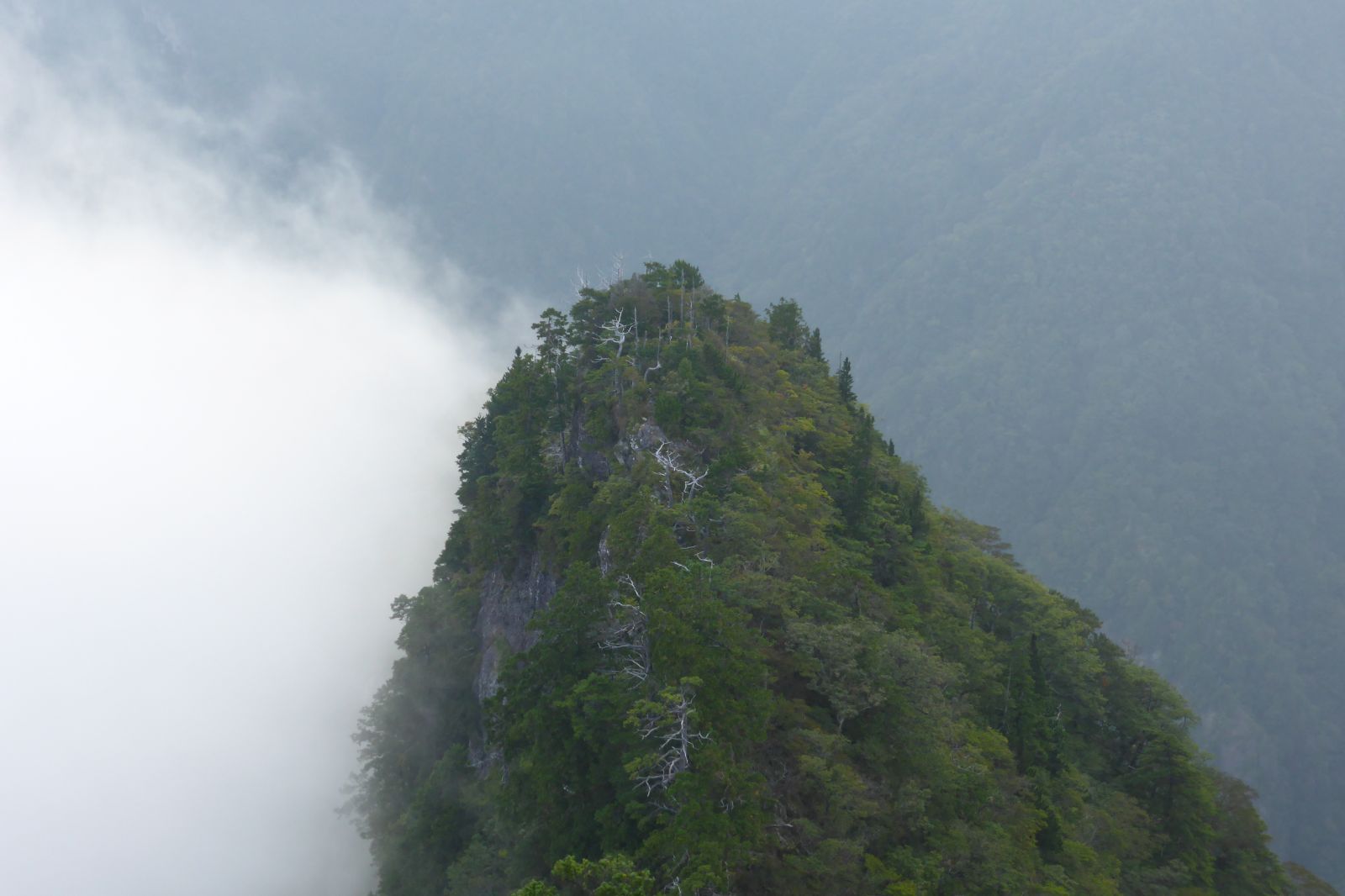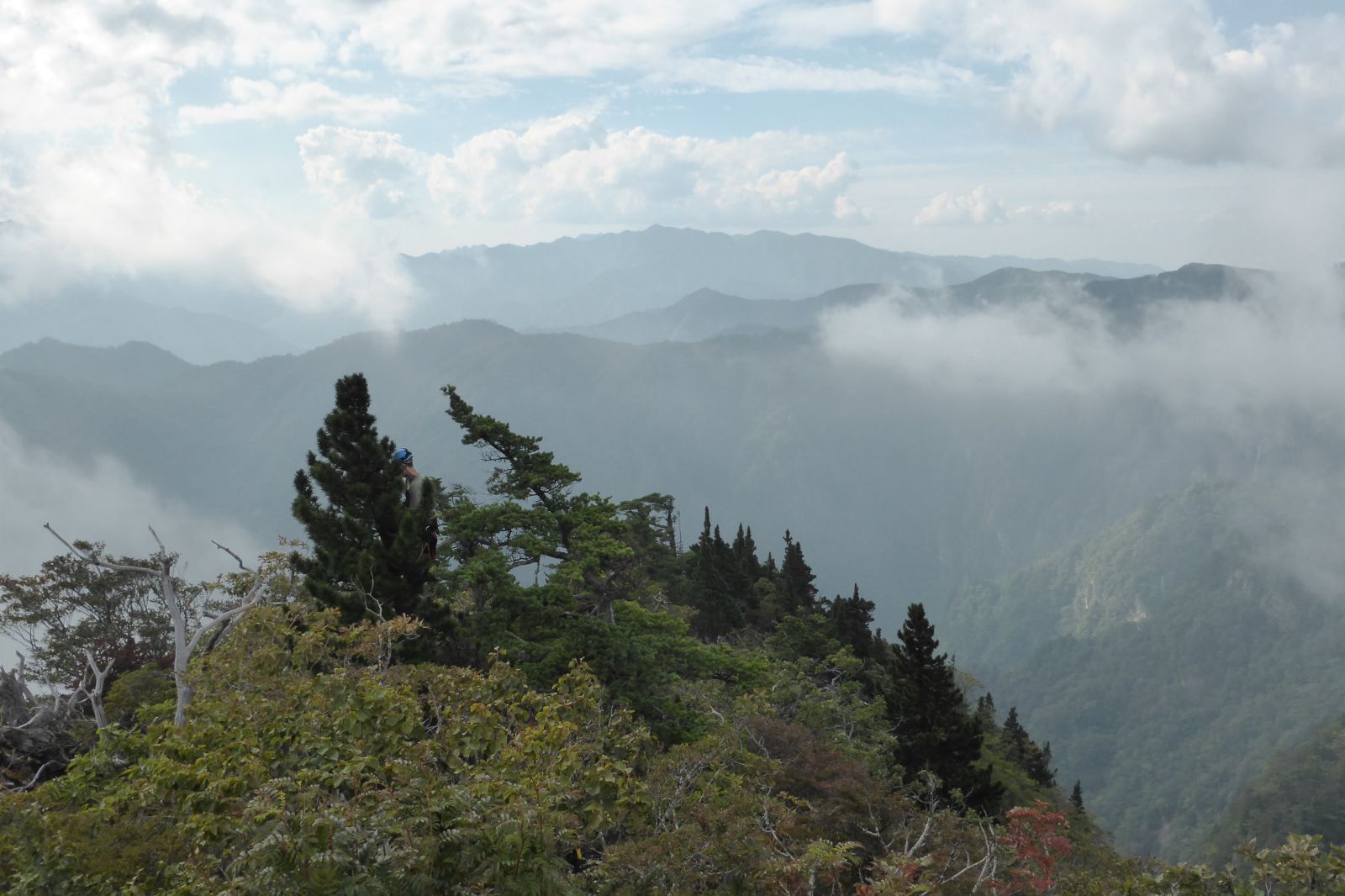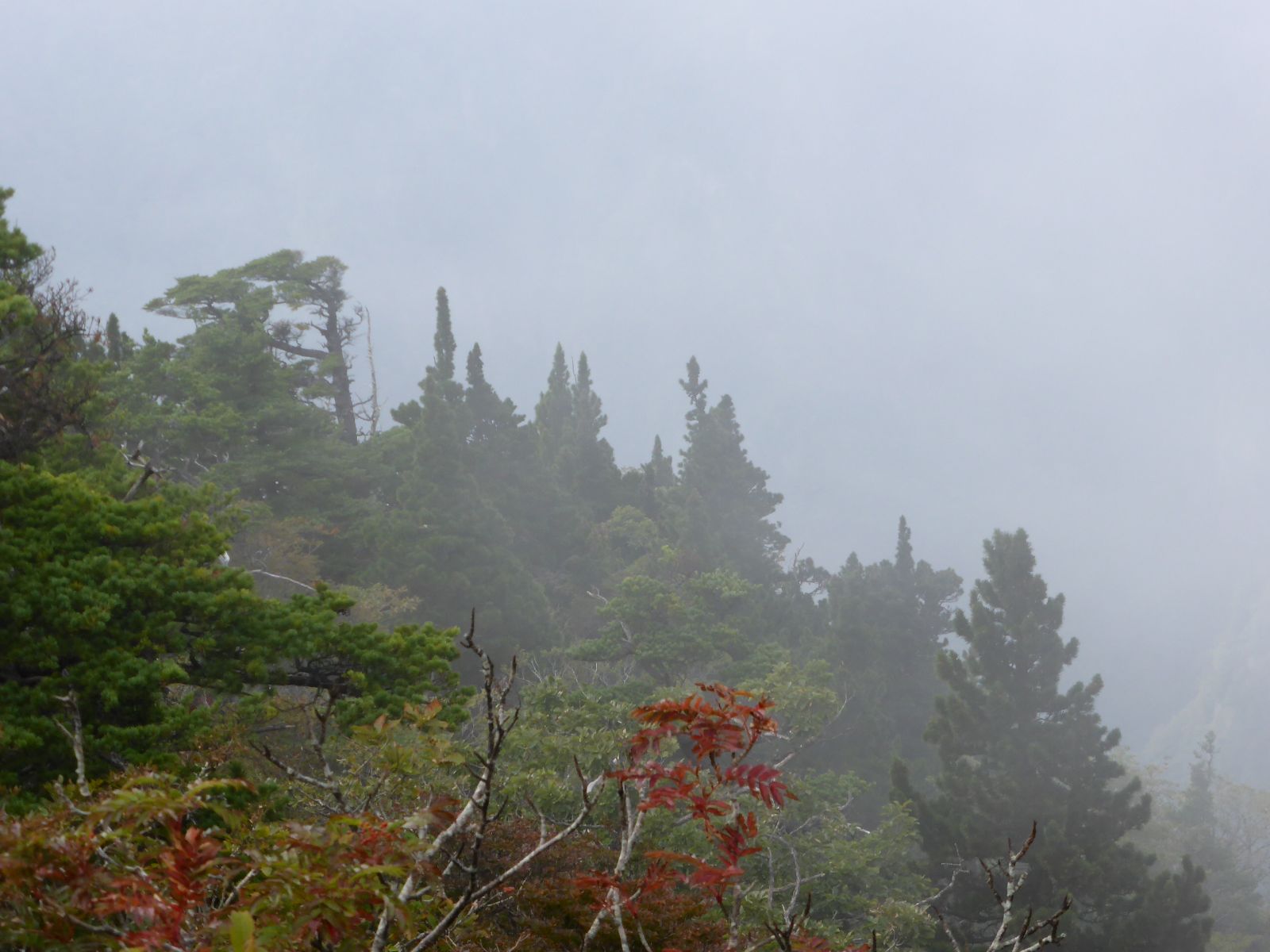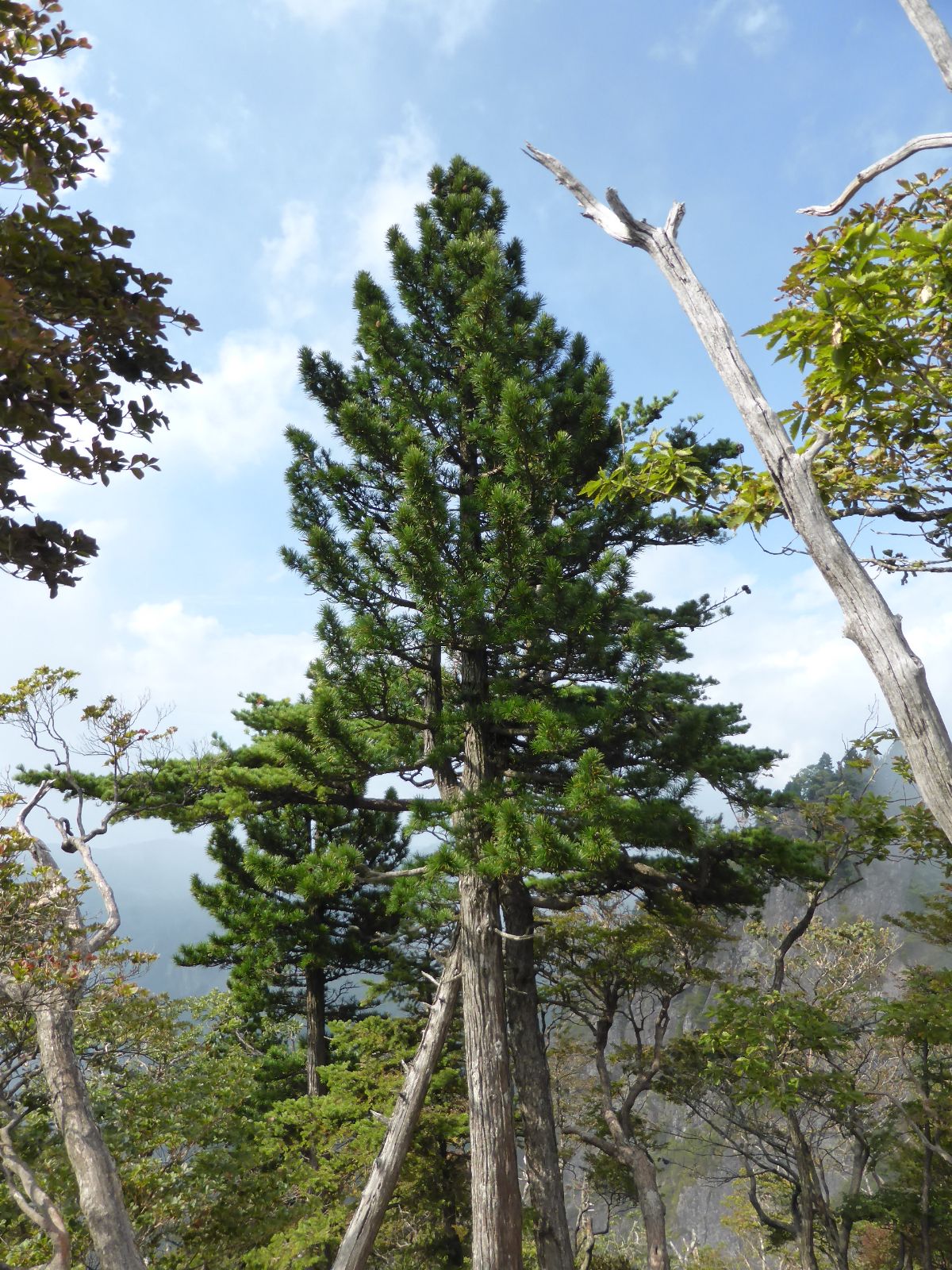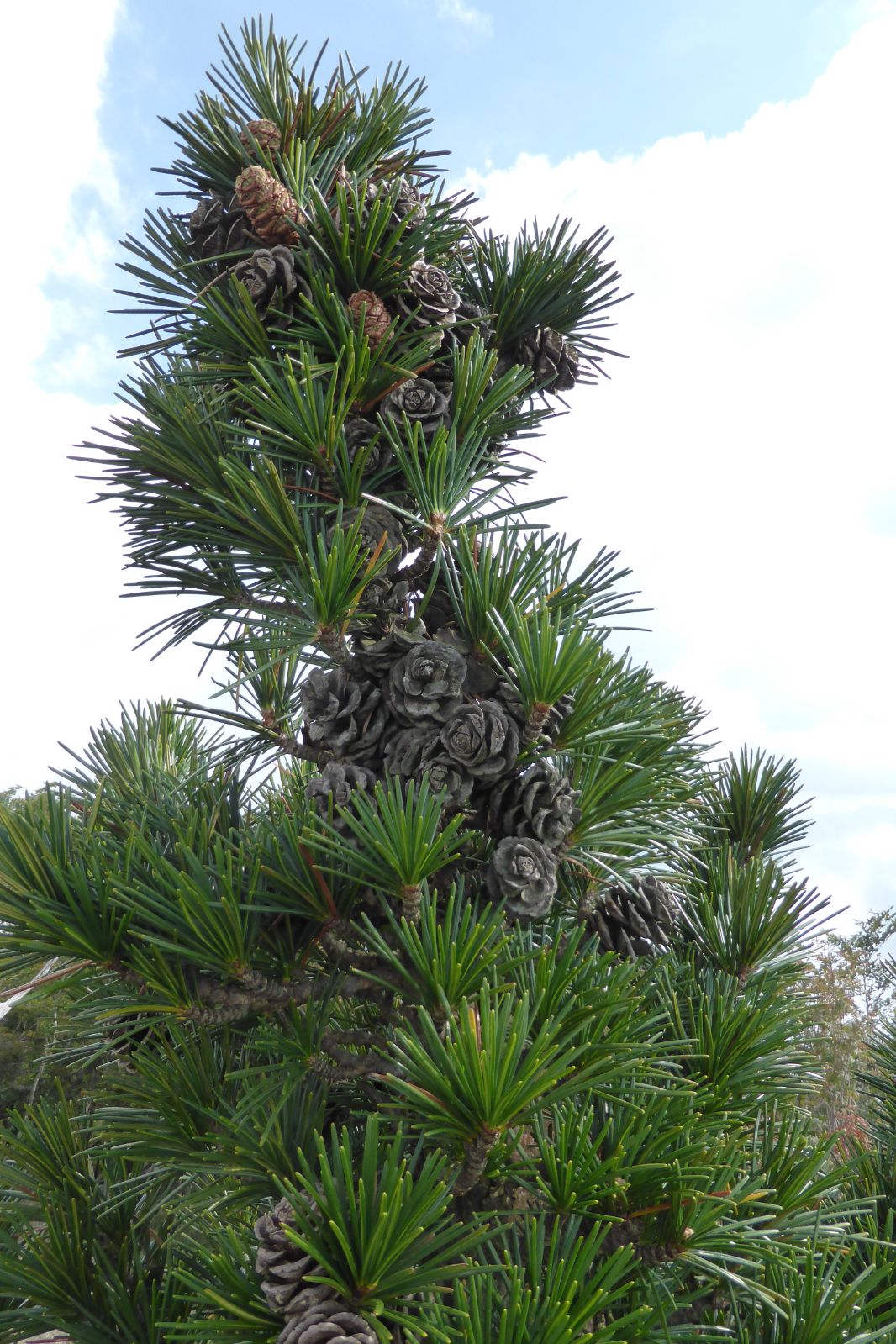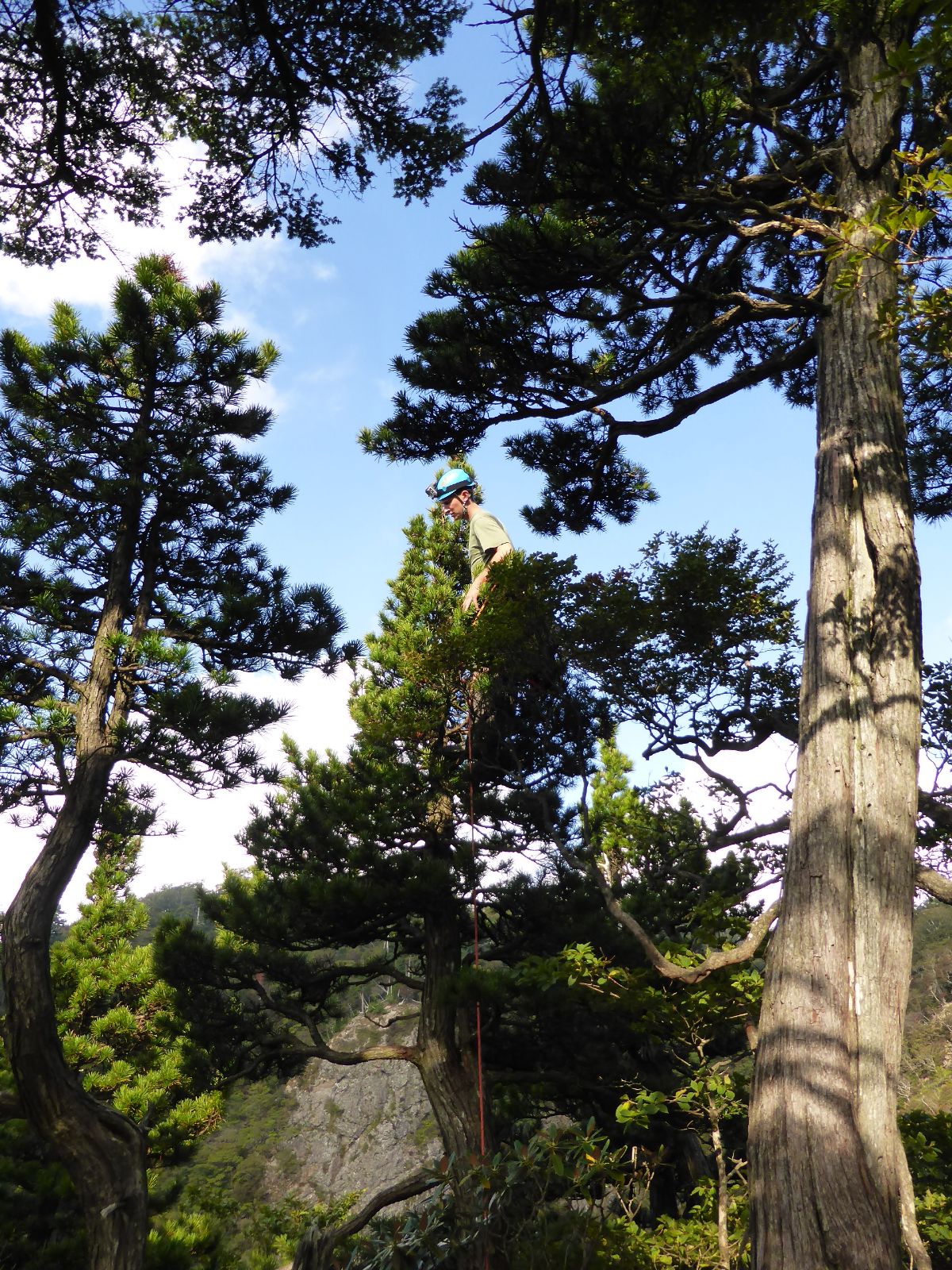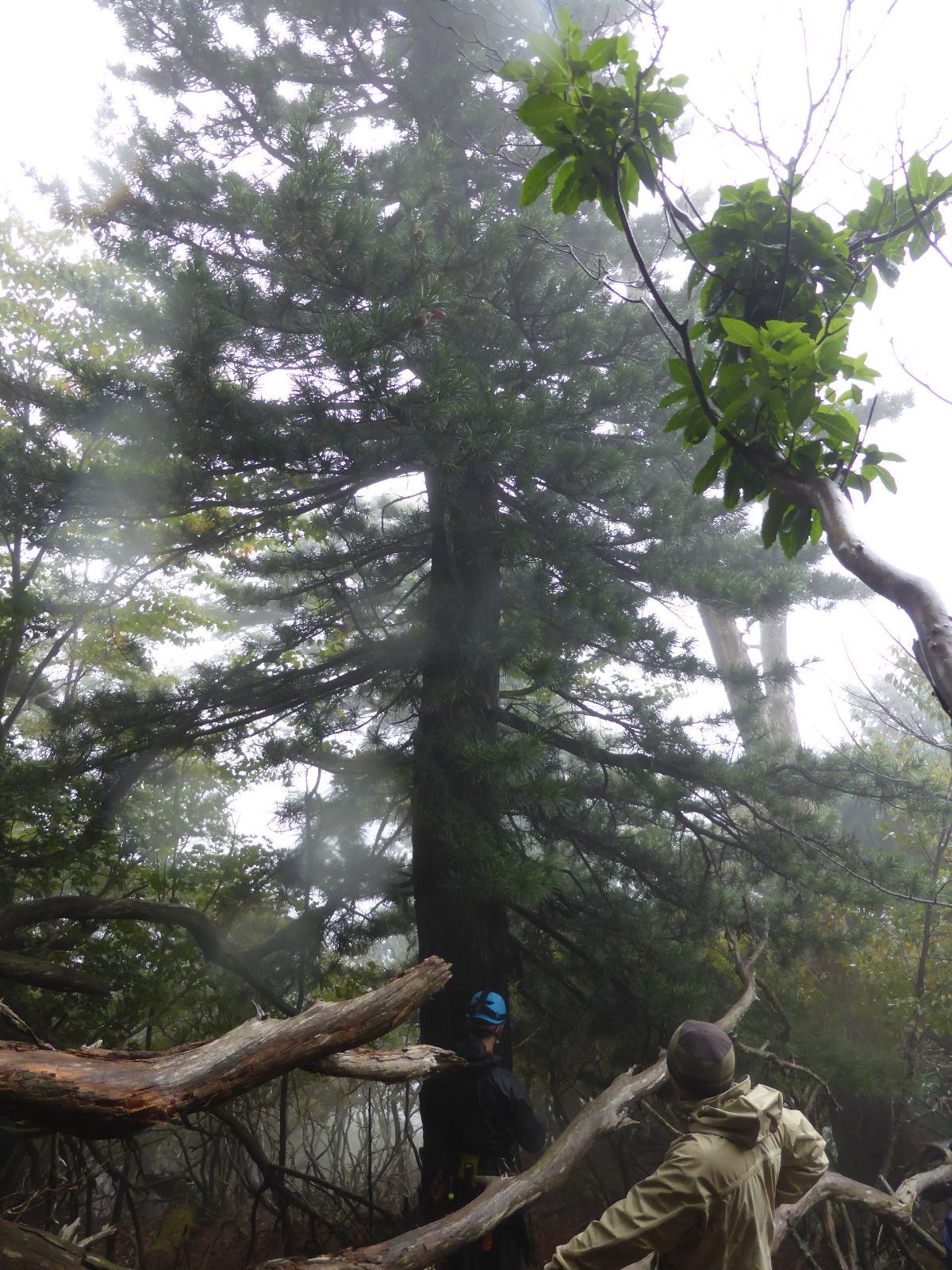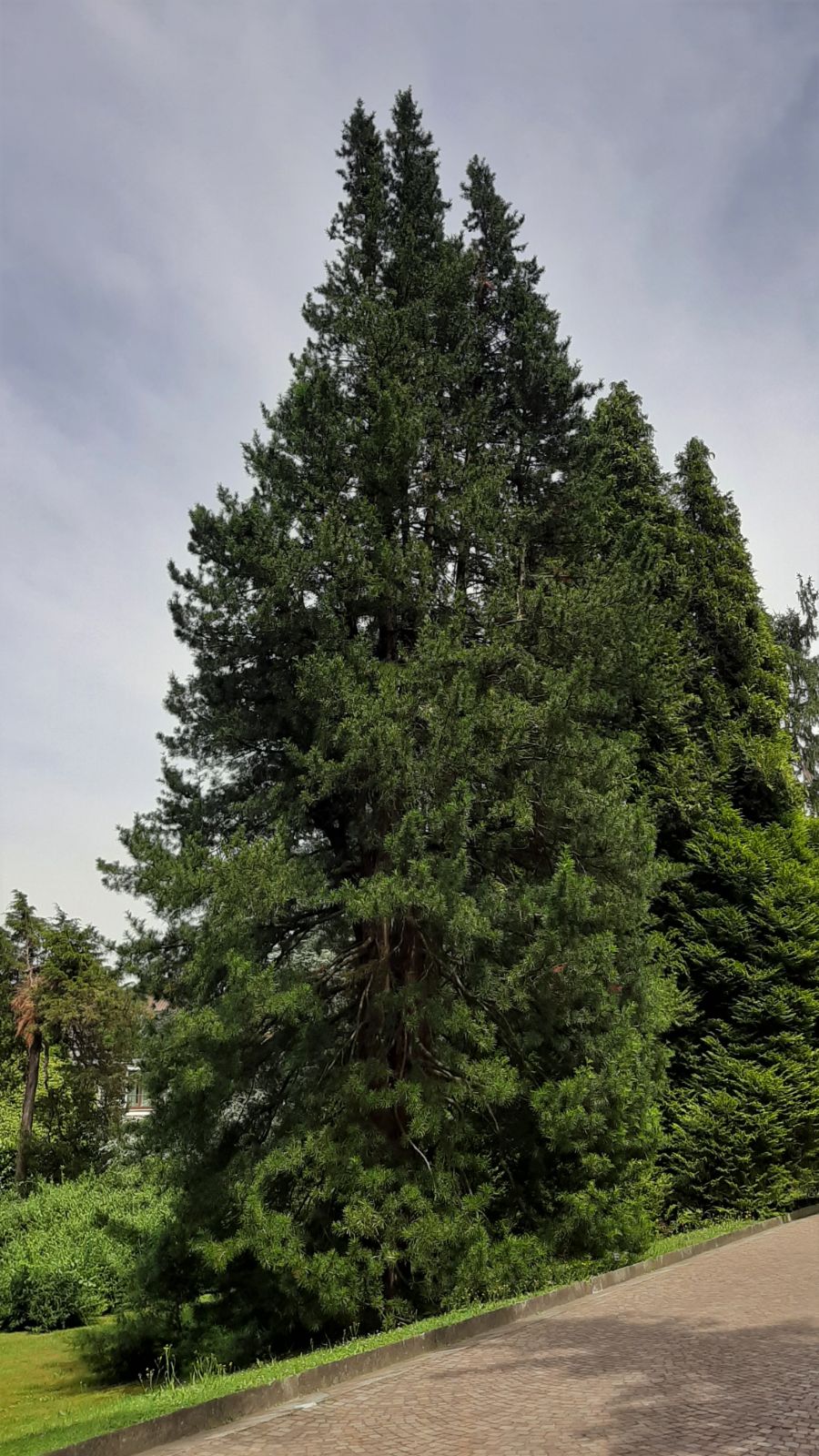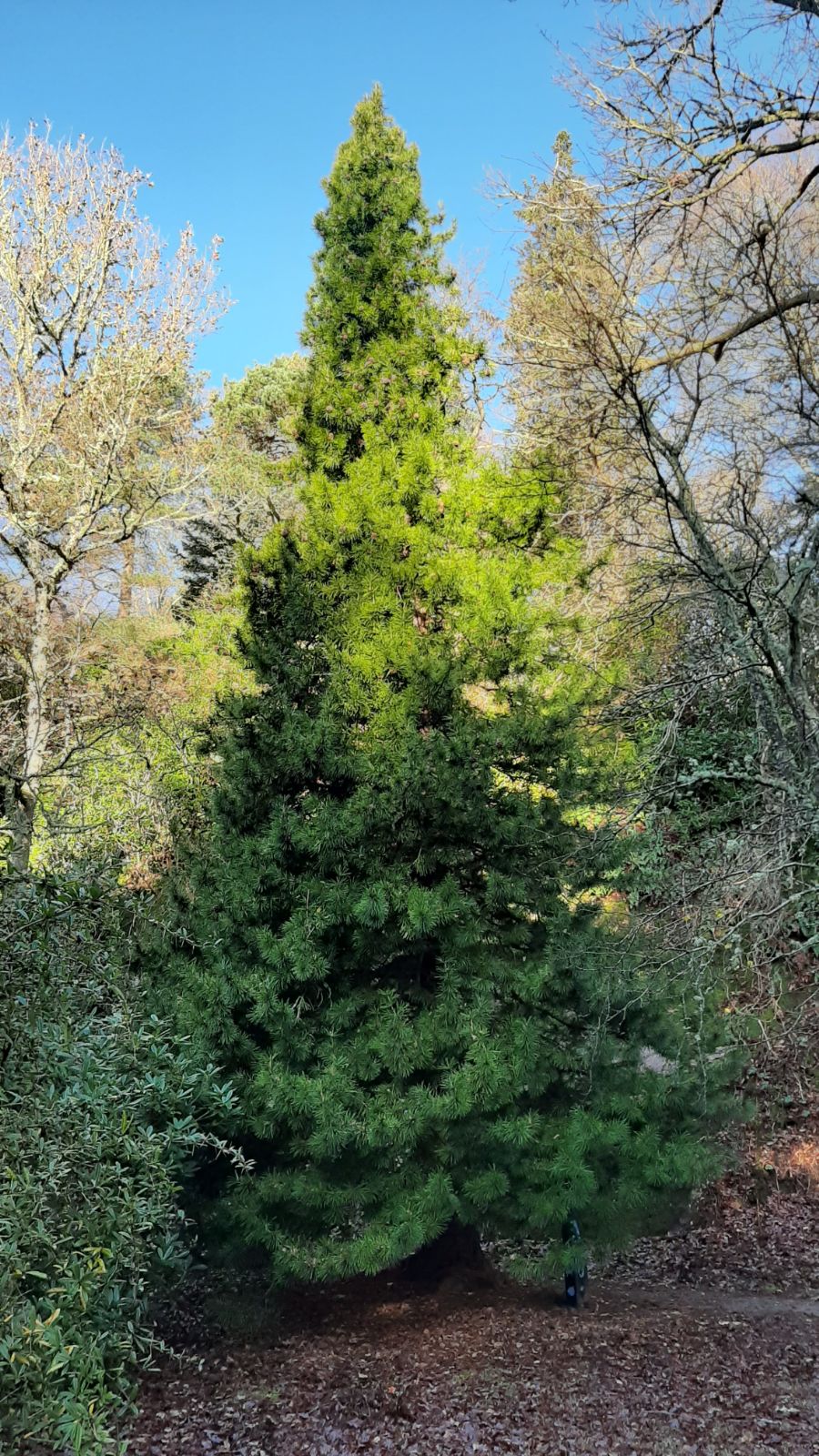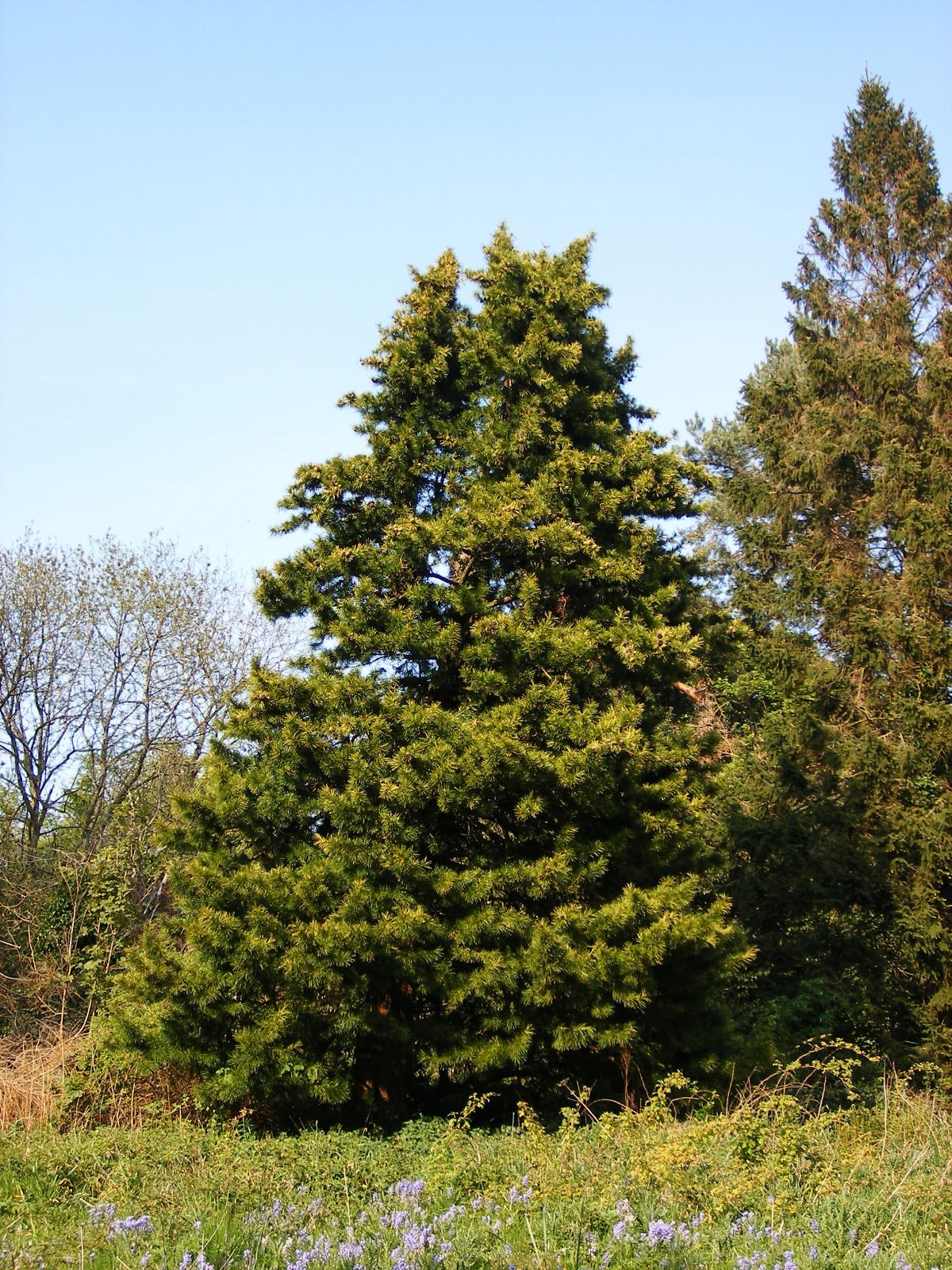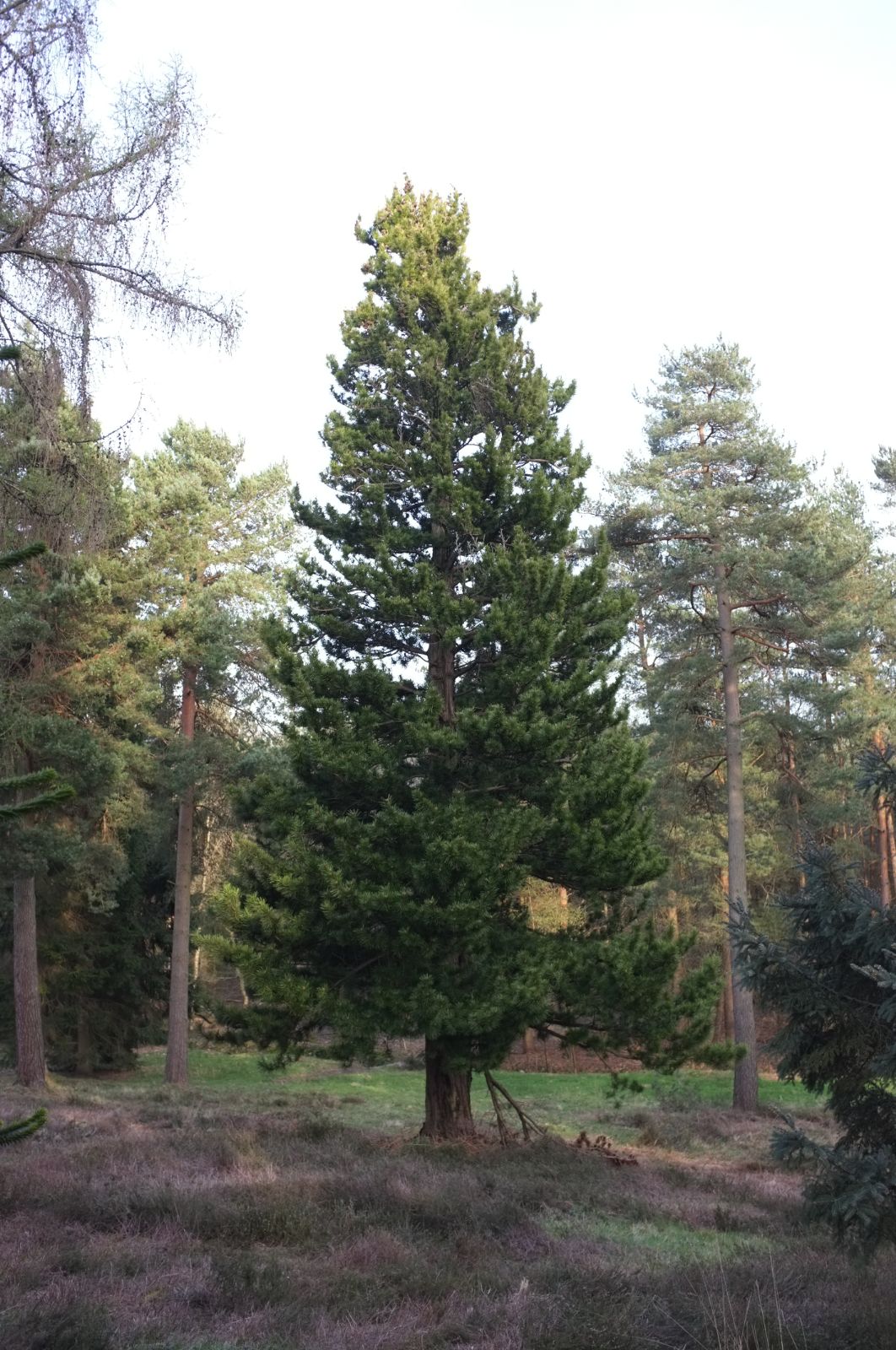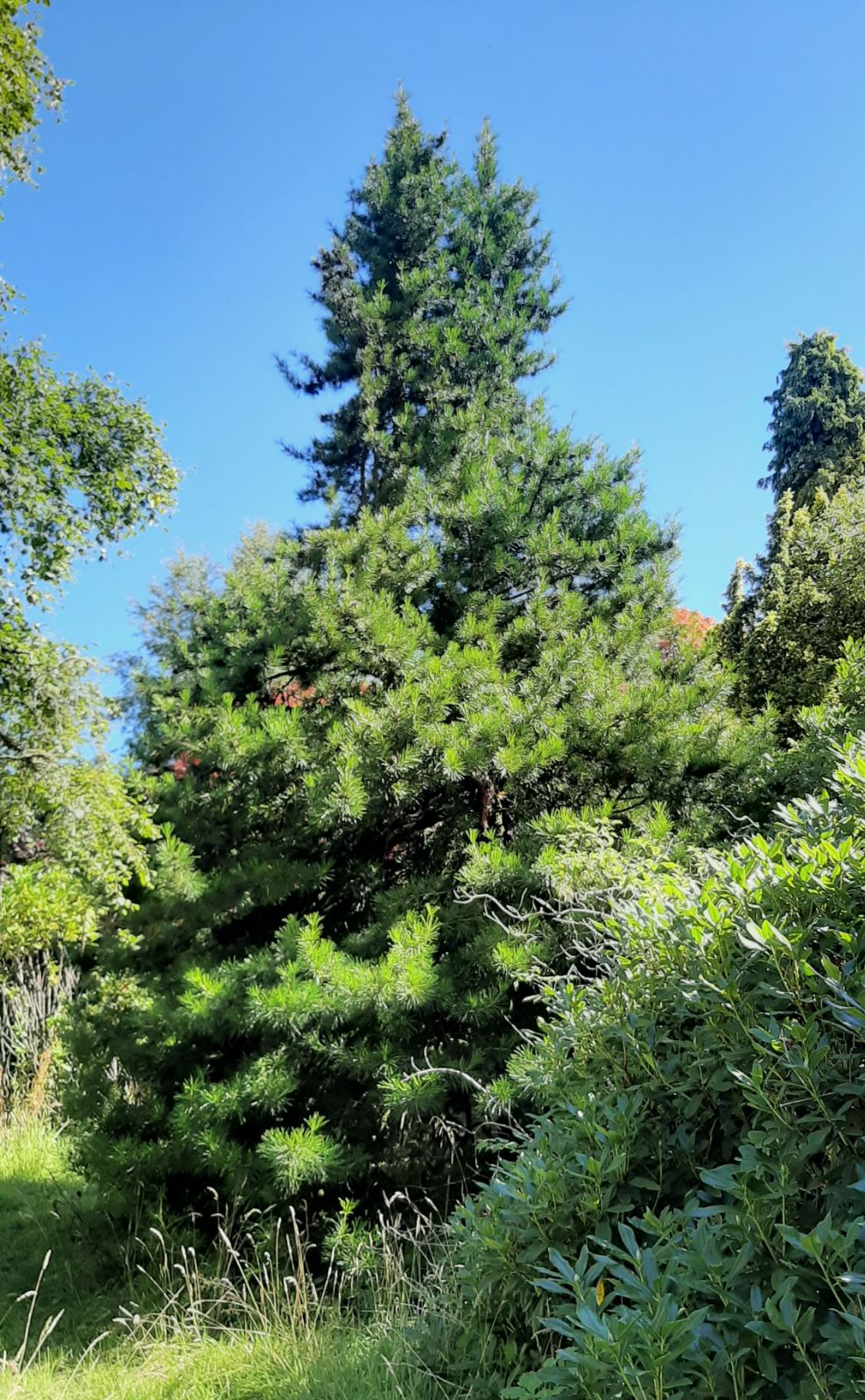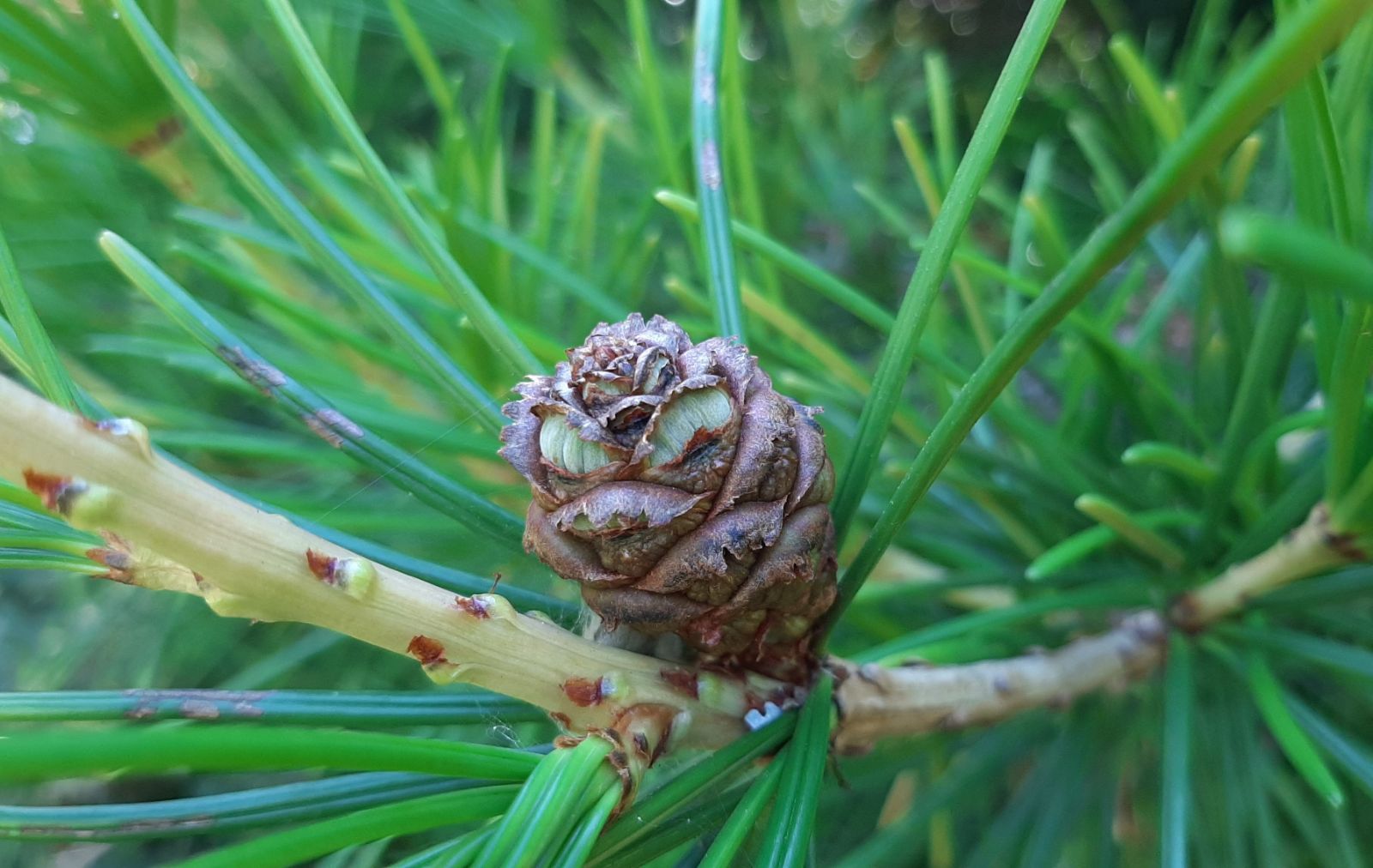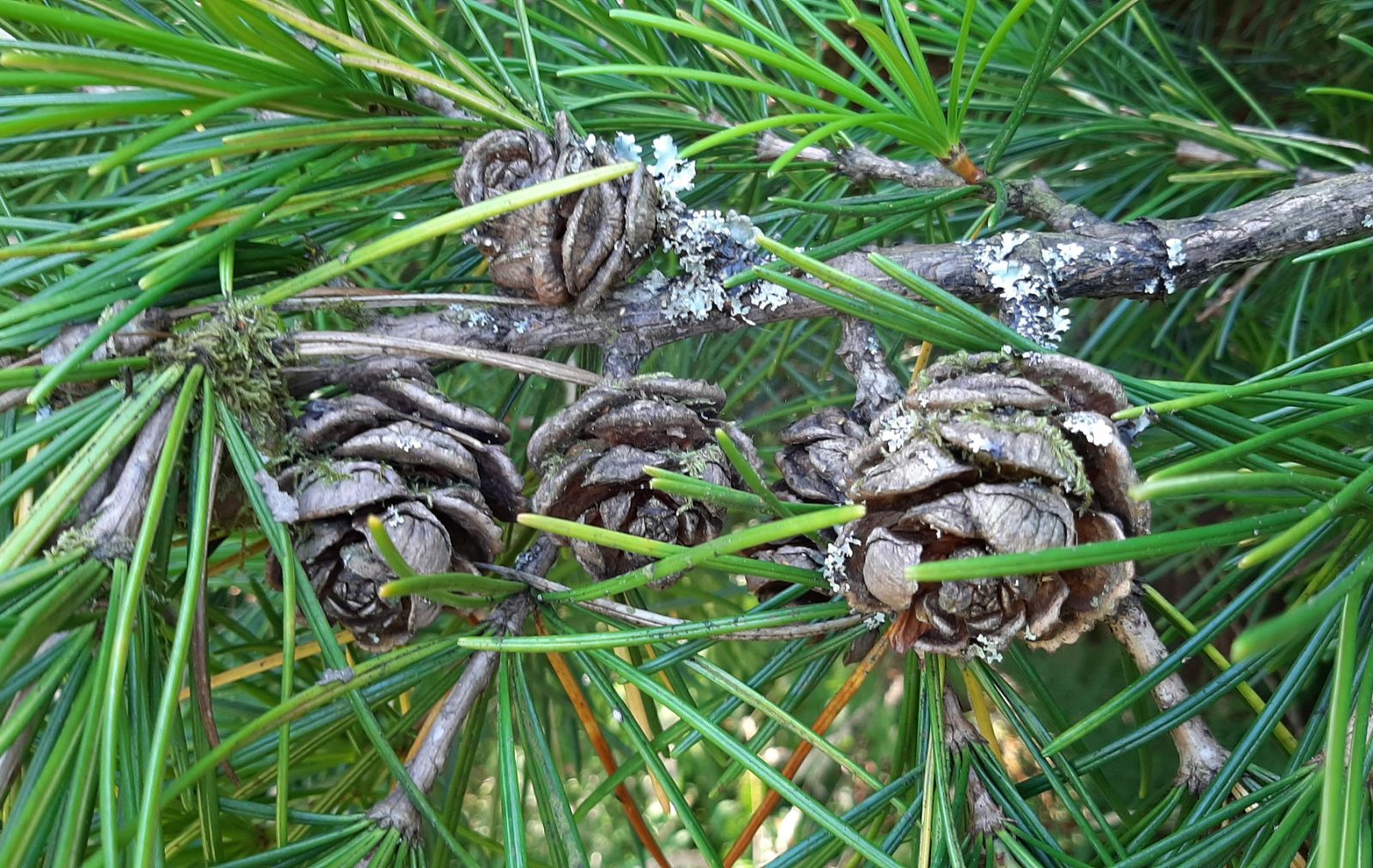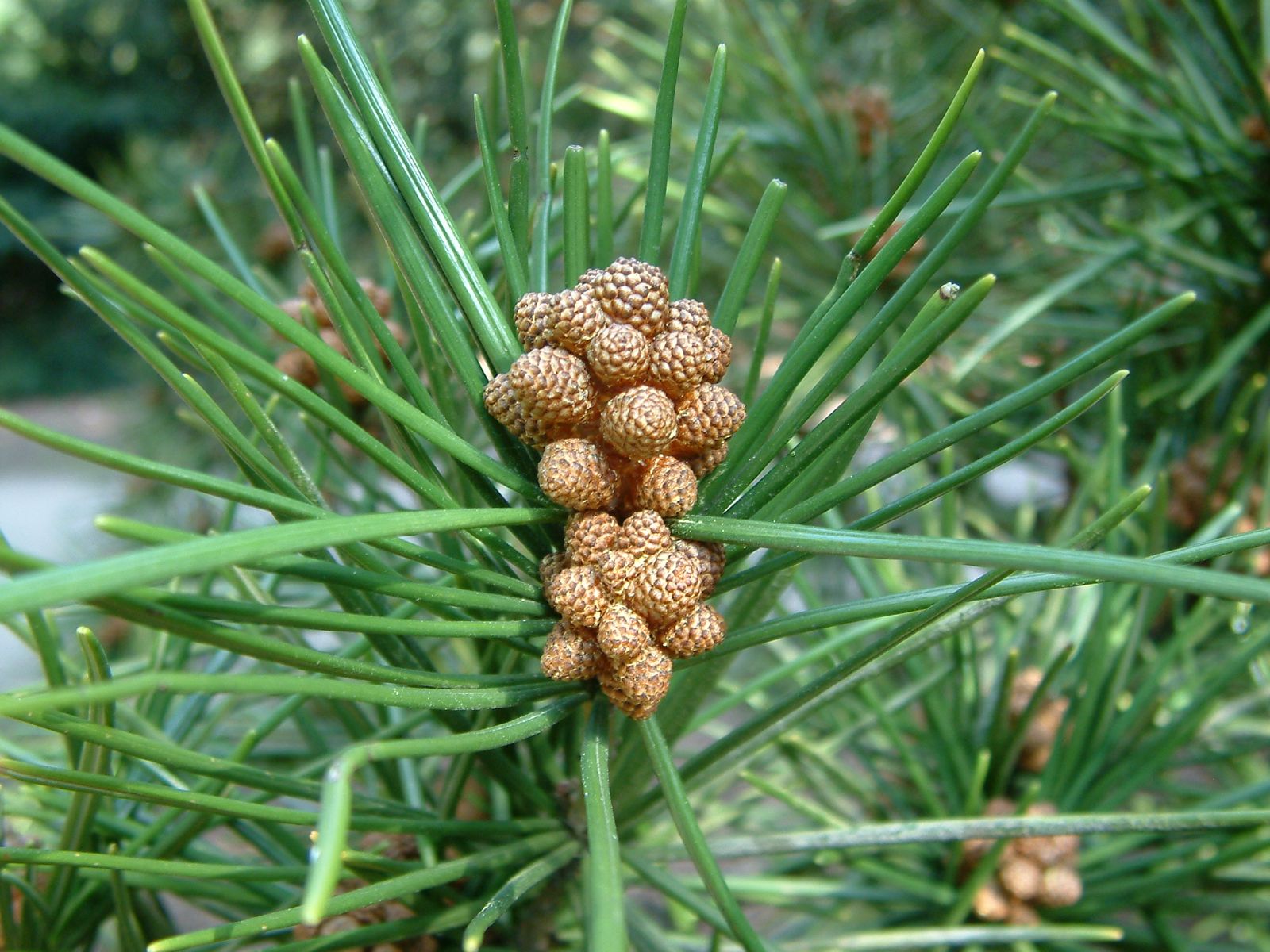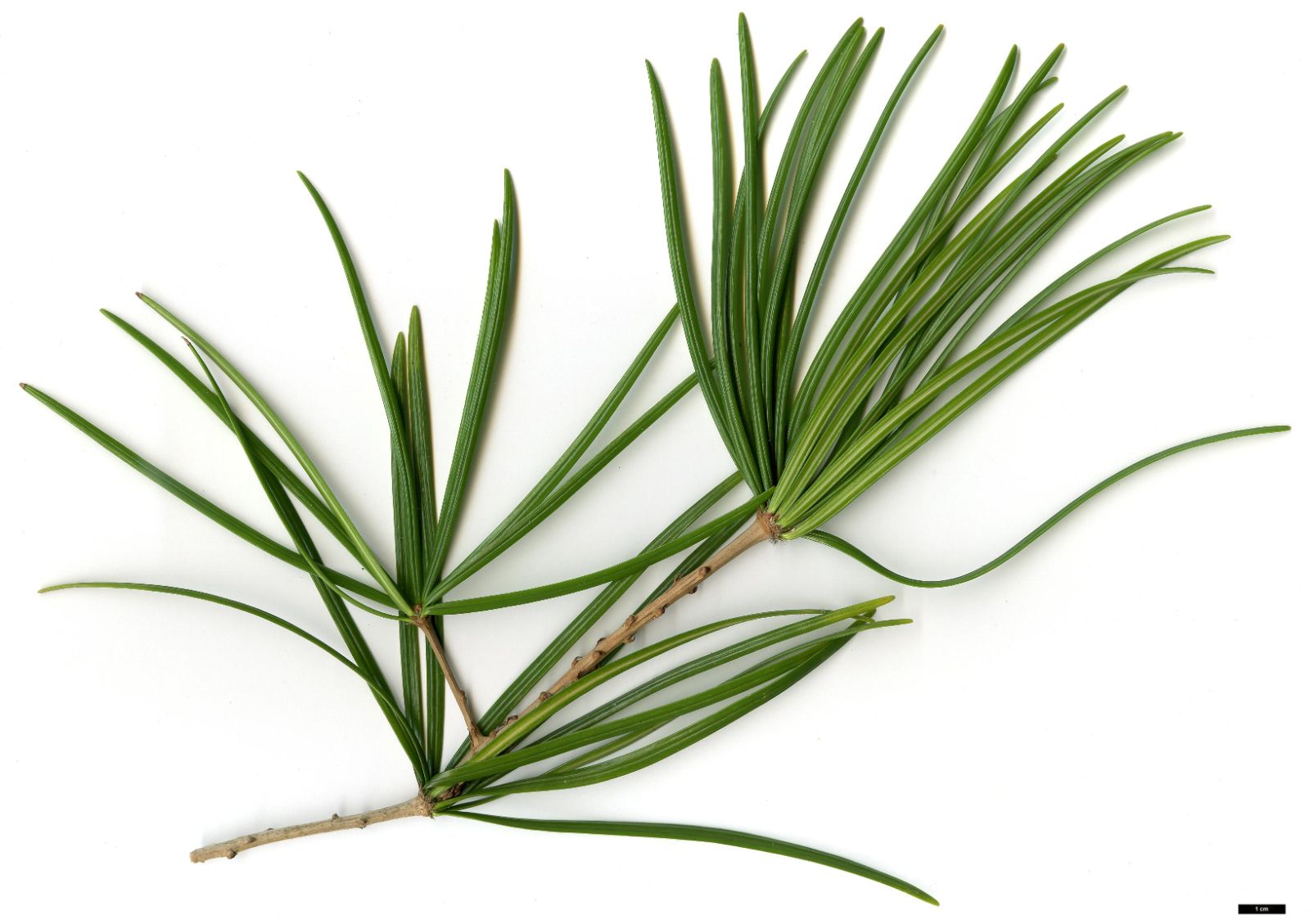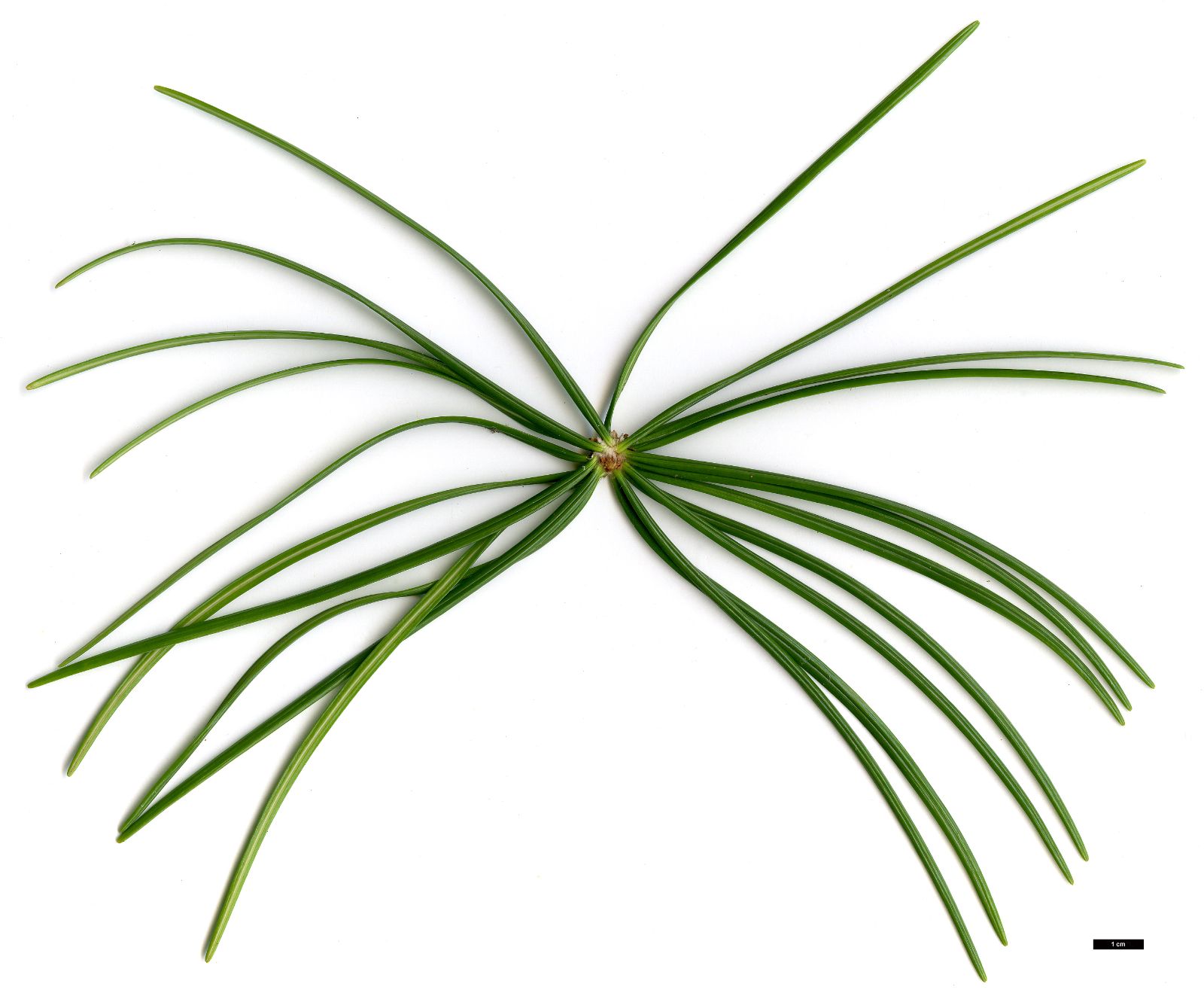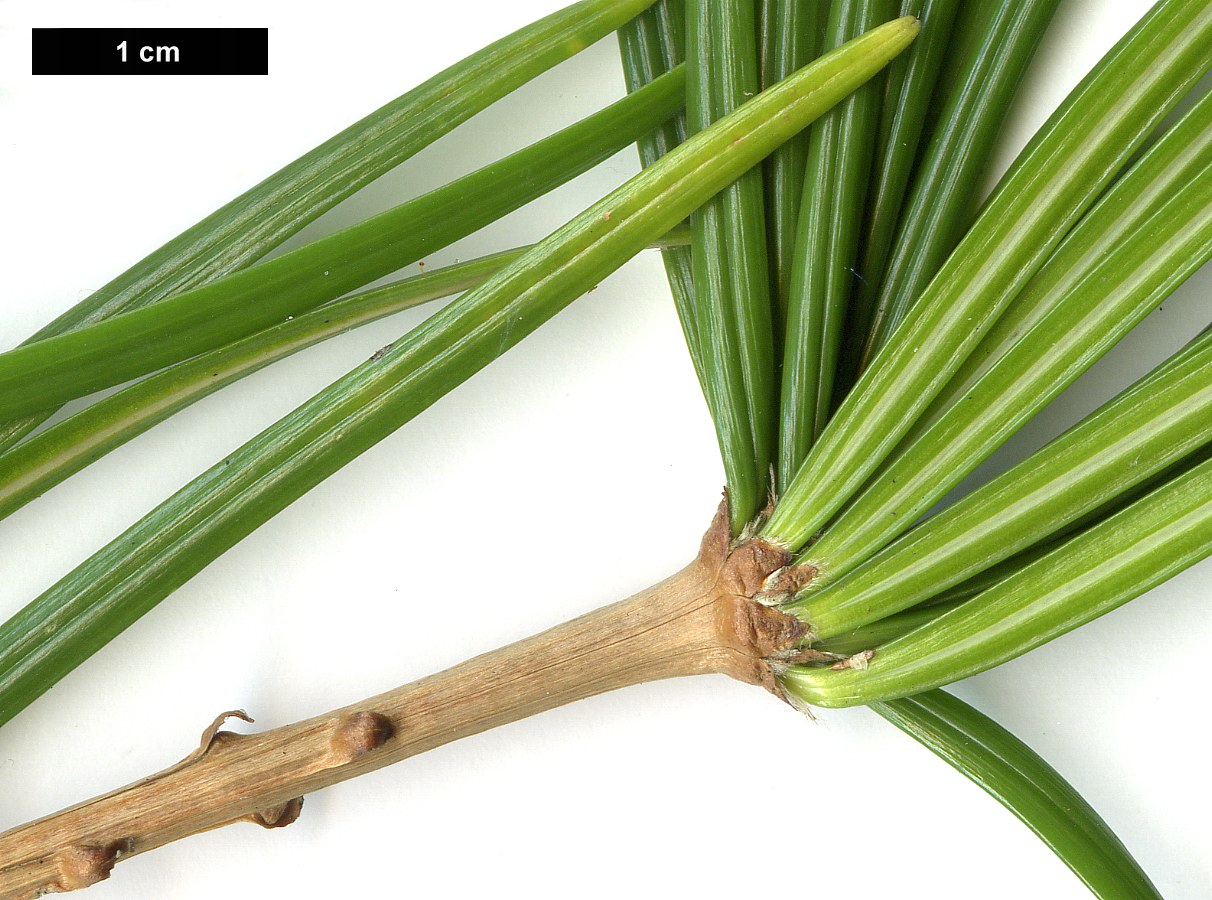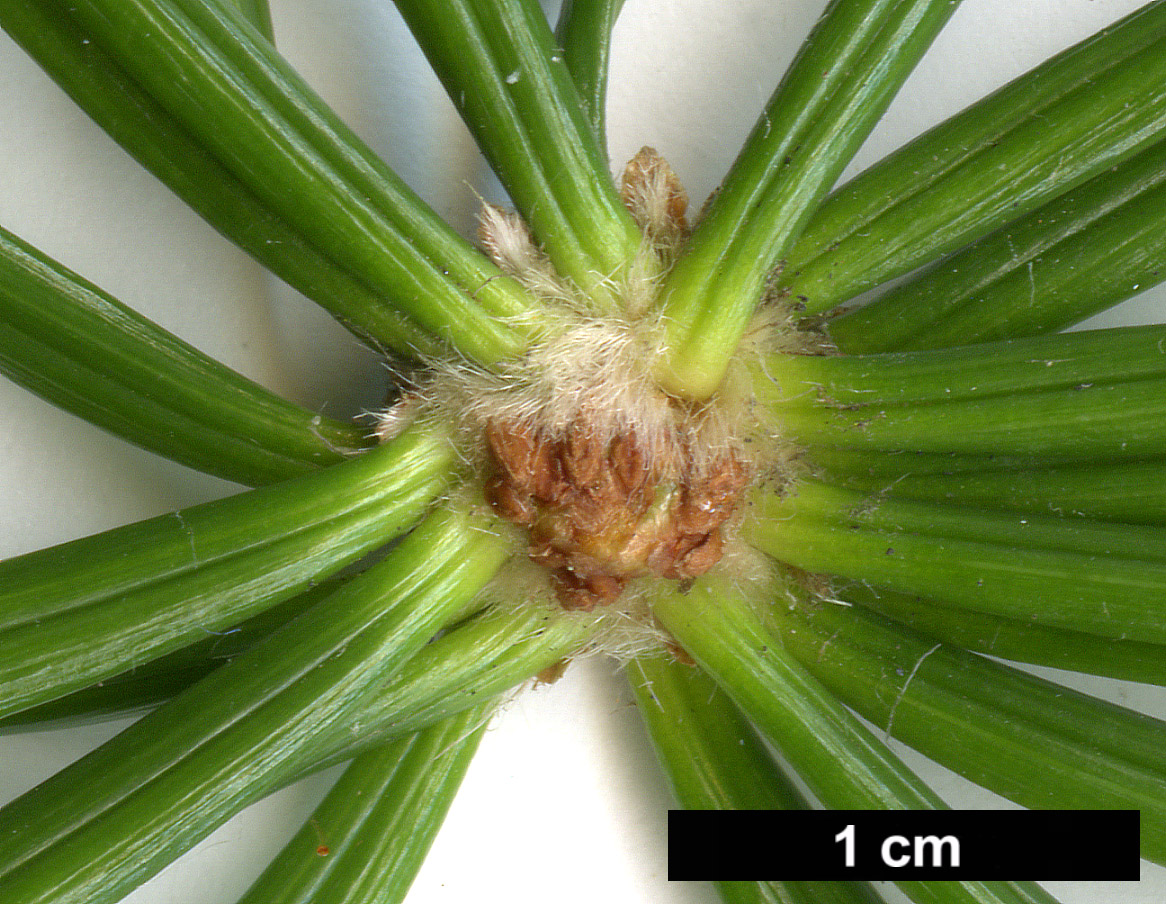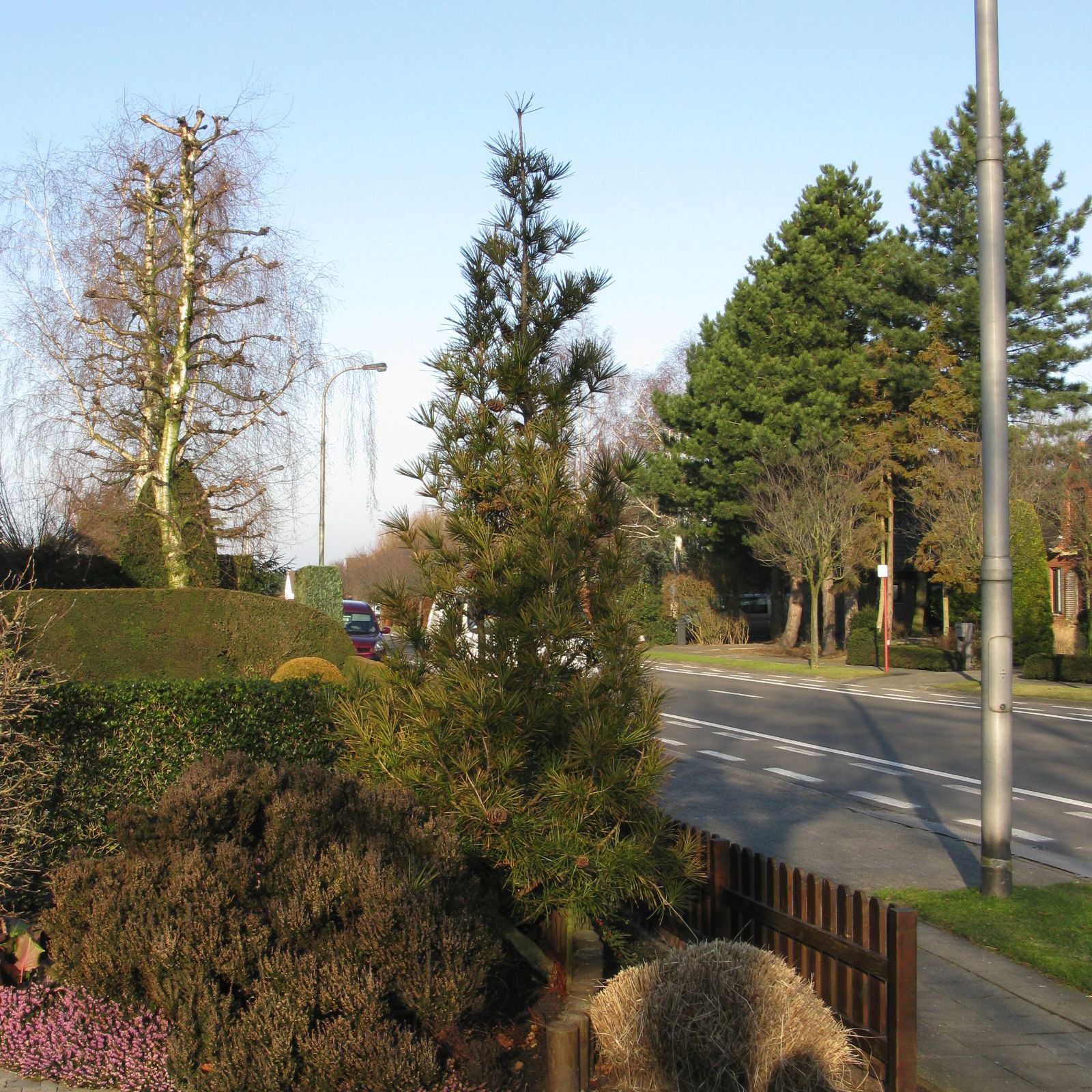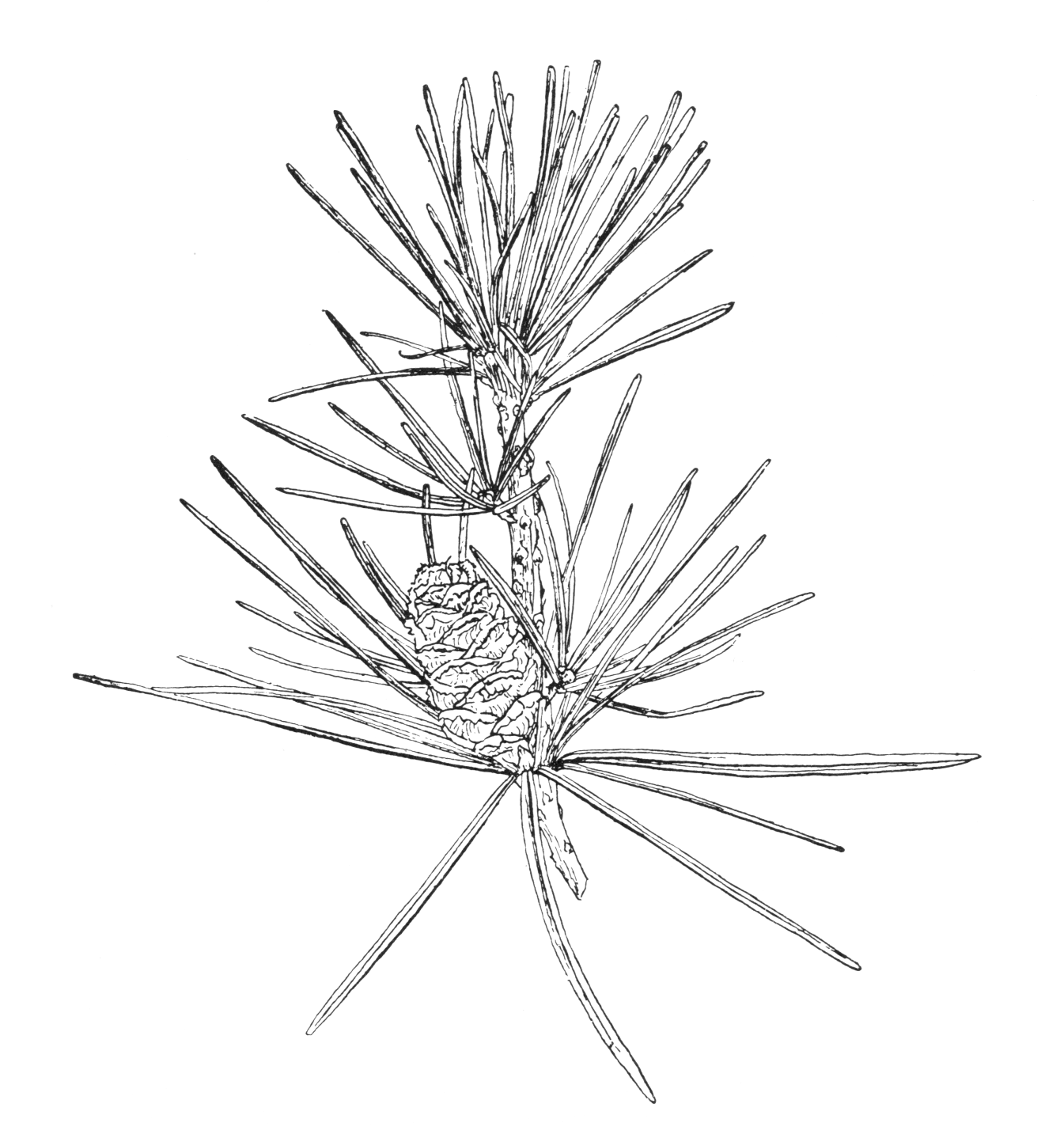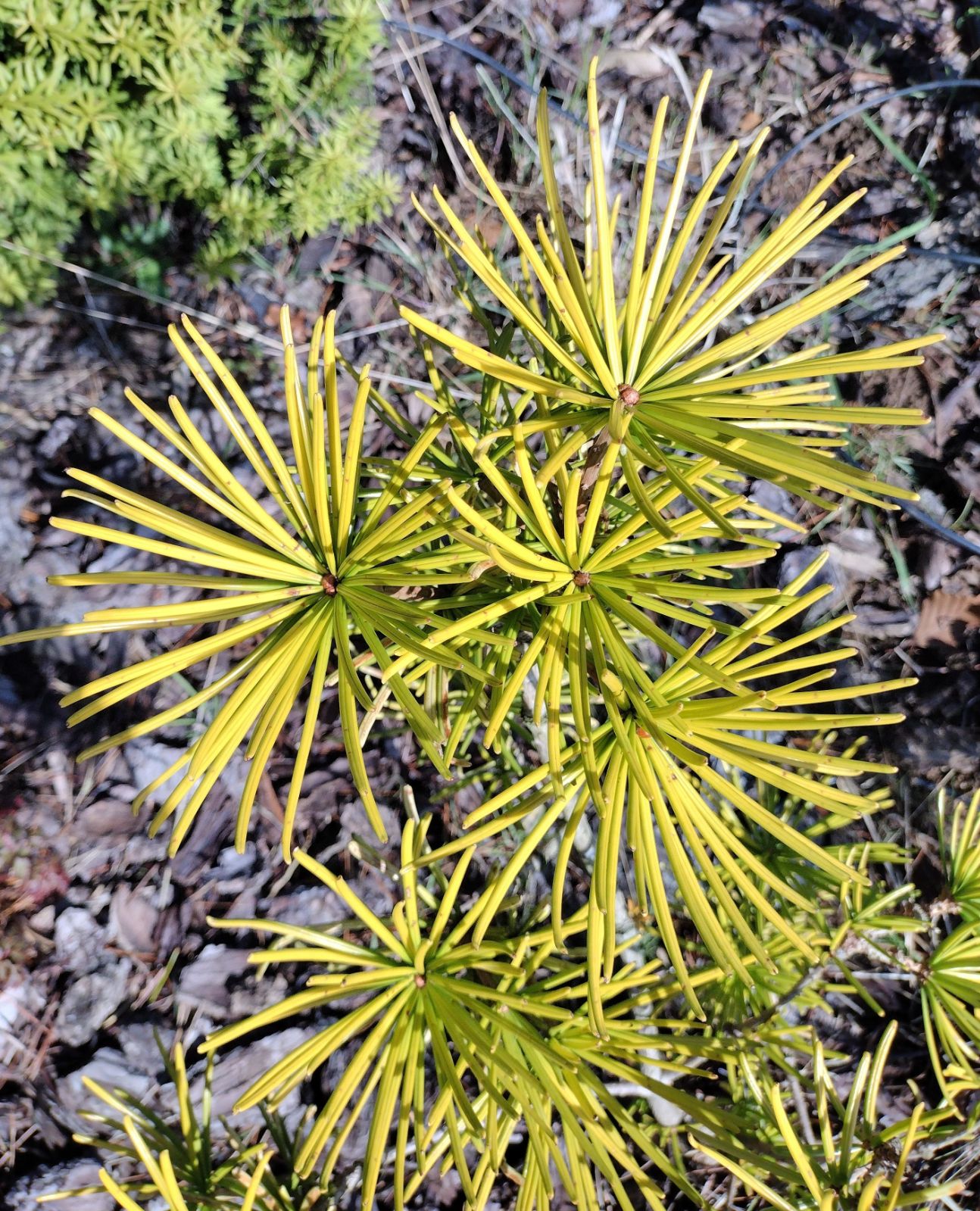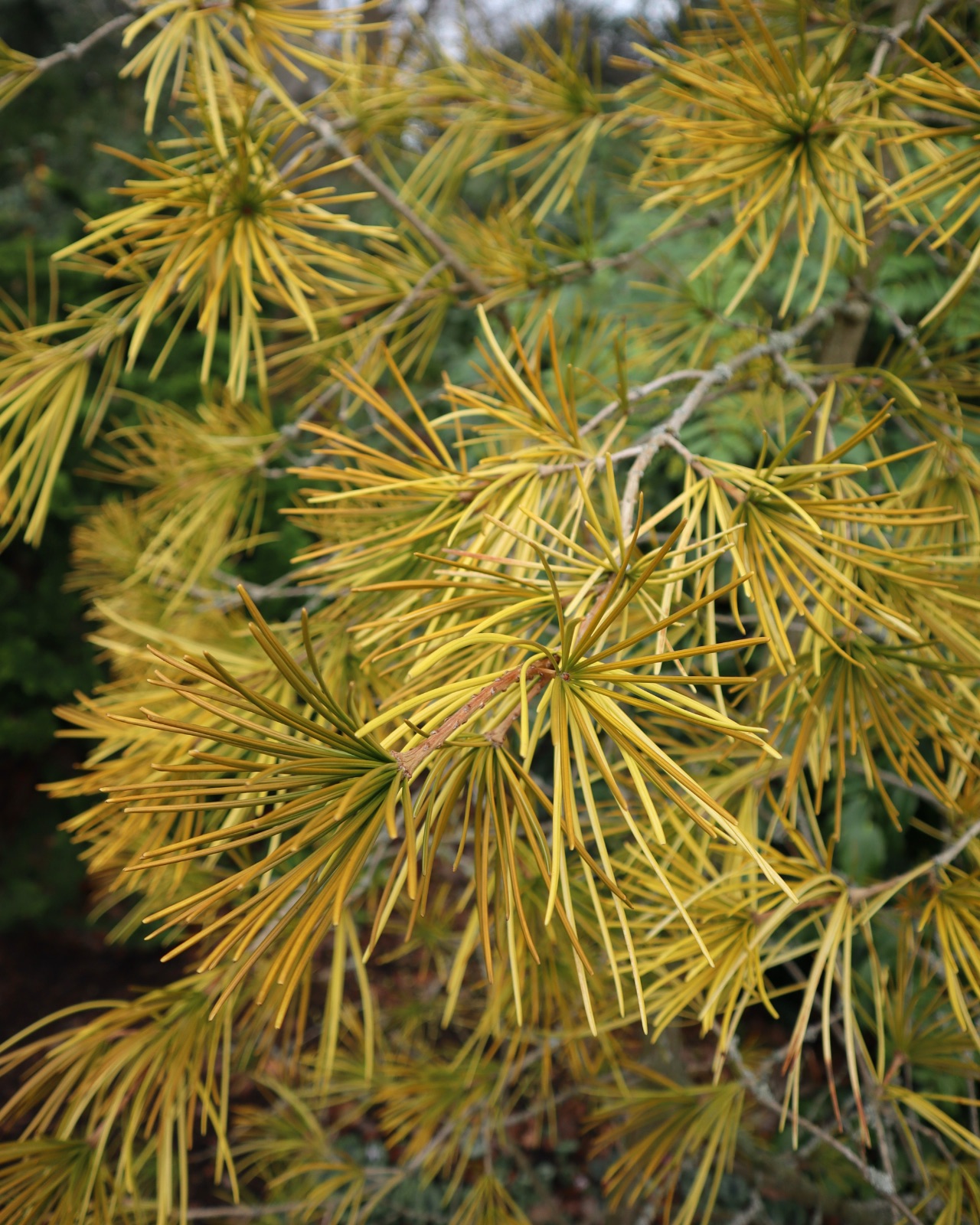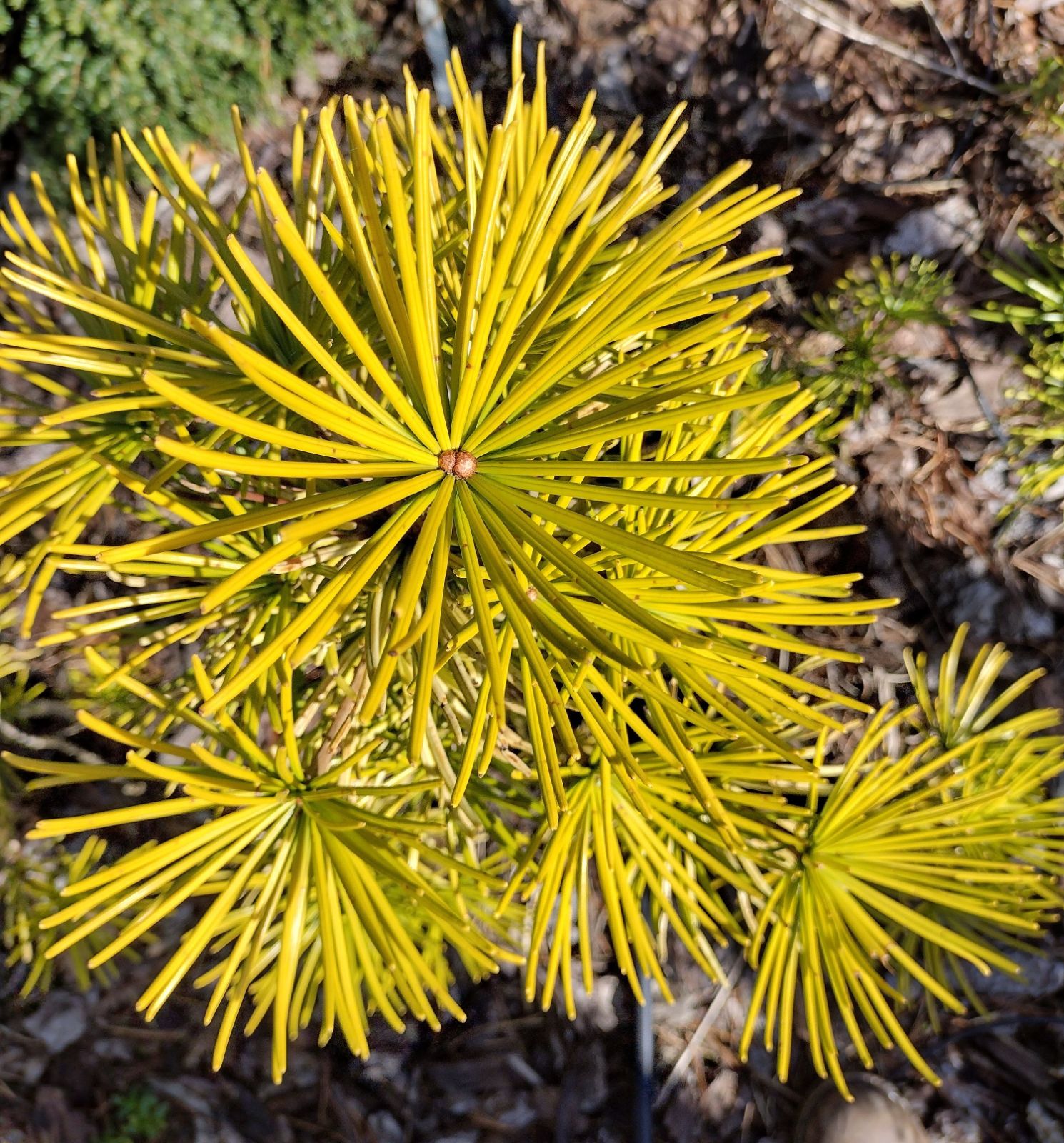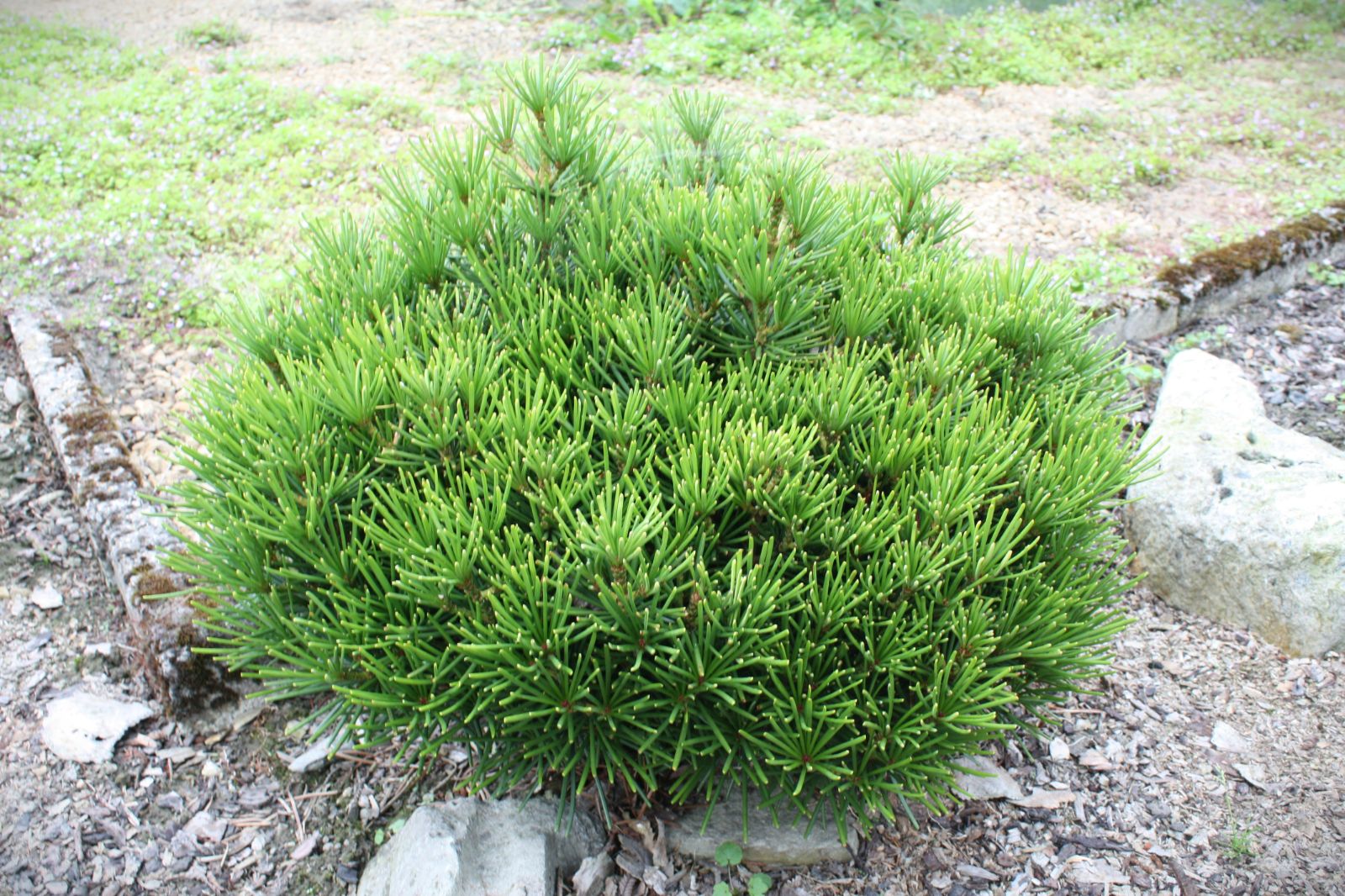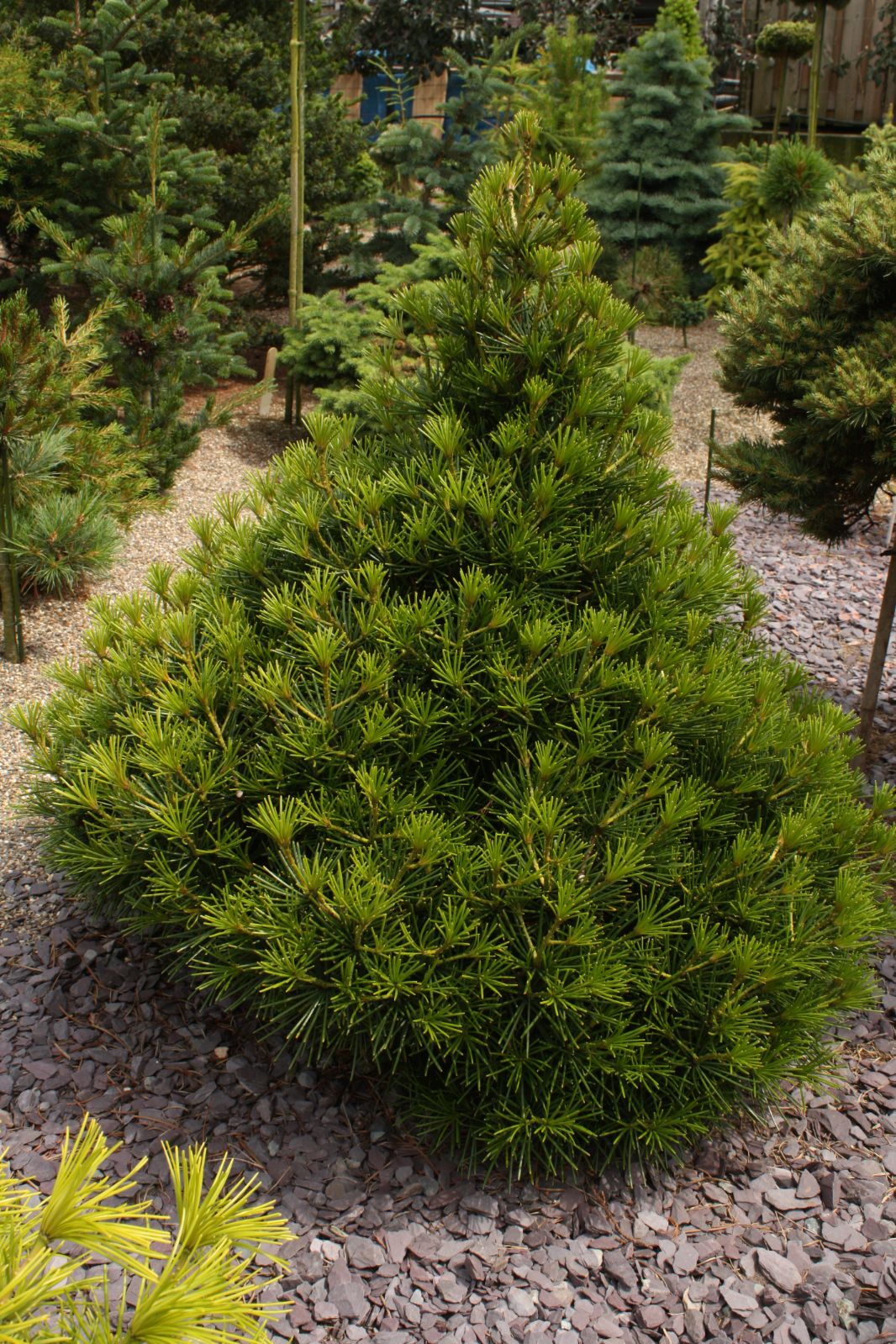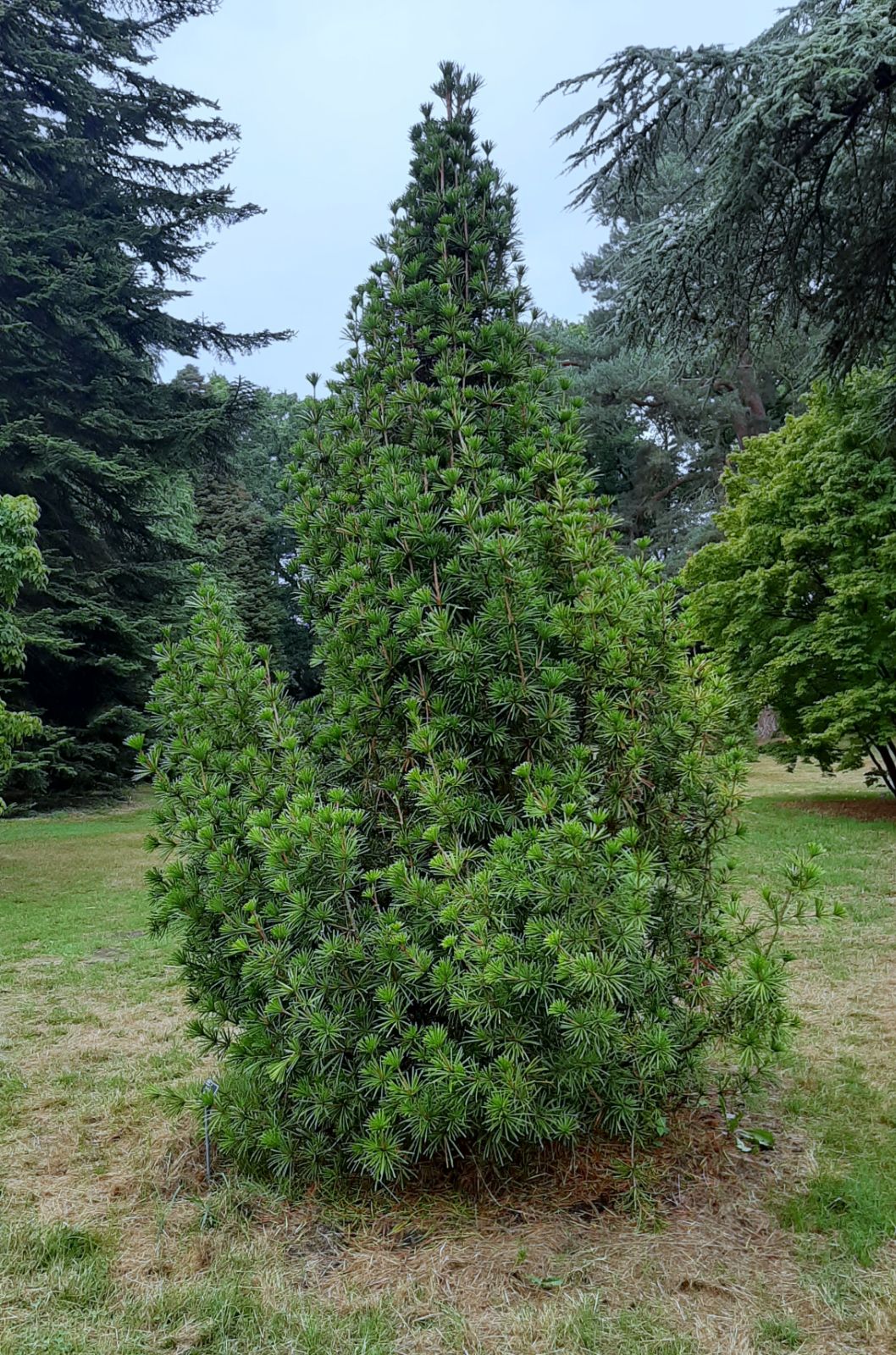Sciadopitys verticillata
Sponsor
Kindly sponsored by
Col. Giles Crisp
Credits
Ben Jones & Tom Christian (2023)
Recommended citation
Jones, B. & Christian, T. (2023), 'Sciadopitys verticillata' from the website Trees and Shrubs Online (treesandshrubsonline.
Genus
Common Names
- Umbrella Pine
- Japanese Umbrella Pine
- Koyamaki (コウヤマキ)
Synonyms
- Taxus verticillata Thunb.
Infraspecifics
- 'Anne Haddow'
- 'Aurea'
- 'Big Filip'
- 'Collector's Variegated'
- 'Compacta'
- 'Cynthia Waxman'
- 'Explosion'
- 'Fasciation'
- 'Fatso'
- 'Feuerwerk'
- 'Filip's Tiny Treasure'
- 'Foxtail'
- 'Globe'
- 'Gold Star'
- 'Goldammer'
- 'Golden Rush'
- 'Goldmähne'
- 'Green Parasol'
- 'Green Spire'
- 'Grüne Kugel'
- 'Hinge'
- 'Janssen's Vareigated'
- 'Jeddeloh Compact'
- 'Joe Kozey'
- 'Knirps'
- 'Kupferschirm'
- 'Little Filip'
- 'Marylin Monroe'
- 'Mecki'
- 'Megaschirm'
- 'Mireille'
- 'Mitsch Select'
- 'Monolith'
- 'Ossorio Gold'
- 'Pendula'
- 'Perlenglanz'
- 'Picola'
- 'Pyramidalis Compacta'
- 'Ruslyn's Golden Parasol'
- 'Short Needle'
- 'Star Wars'
- 'Sternschnuppe'
- 'Tsai Cheng'
- 'Tumbleweed'
- 'Turned Needle'
- 'Variegata'
- 'Winter Green'
Other taxa in genus
Monoecious, evergreen tree to 20–30(–45) m tall, to 1–2(–3) m in diameter; bark reddish-brown, soon longitudinally fissured, thick on older stems, shedding in narrow strips. Leaves dimorphic; scale leaves small, scattered on long shoots and crowded into two or three imbricating rows at apex of branchlets where each subtends an ordinary leaf, reddish brown, membranaceous, 3–5 × 2–4 mm; ordinary leaves consisting of two completely fused true leaves, produced at end of previous year’s shoots in a subwhorl of (8–)10–25(–40), each arising from the axil of a scale leaf, narrowly linear, tapering at each end, compressed, coriaceous, lustrous, (4–)8–14 × 0.2–0.4 cm, apex obtuse, dark green on both sides except under surface with a pale groove c. 1 mm wide along entire length, transverse sections dorsiventrally compressed, elliptic, with two vascular bundles and 5–10 marginal resin canals. Pollen cones terminal or sub lateral, clustered, individual cones subglobose to ovoid, 4–6 × 3–5 mm, yellow, brown at maturity. Seed cones terminal or sub lateral, woody, ovoid, (3.5–)8–12 × (2.5–)4–6 cm, seminiferous scales large, flabellate, c. 2.5 cm long and wide, margins more or less reflexed, with 7–9 seeds; bract scales small, ~half to as large as seminiferous scales, the lower half connate with the latter. Seeds ellipsoid, compressed, with a marginal wing 8–13 × 6–8 mm including the wing. Flowering April. Seed cones ripening after c. 18 months. Chromosome number: 2n=20. (Farjon 2017; Eckenwalder 2009; Ohwi 1965).
Distribution Japan Honshu, Shikoku, Kyushu
Habitat In mixed conifer-broadleaf forests at 200–1700 m asl with a broad range of associates, but most typically Chamaecyparis obtusa, C. pisifera, Tsuga sieboldii, Abies firma, Pinus parviflora, and angiosperms such as Aesculus turbinata, Magnolia obovata, Cercidiphyllum japonicum and Acer rufinerve. A secondary-succession species, Sciadopitys may occur as scattered individuals, in small groves, or in more or less pure stands depending on the successional stage of the forest.
USDA Hardiness Zone 5-7
RHS Hardiness Rating H6
Conservation status Near threatened (NT)
Sciadopitys verticillata is one of the most fascinating of all conifers. A so-called living fossil, it sits alone, one species in one genus in its own family, with no close living relatives, but with a fossil record that can track its ancestors back some 230 million years (Farjon 2008). The peculiar arrangement of its leaves is unique among conifers, as is the production of a latex-like, non-resinous sap (Yates et al. 2019; and see genus article). Revered in its native Japan where its timber has been highly prized, it is slow growing even in the wild where, as in gardens, it forms dense, slender, beautiful spires of lustrous dark green foliage. In Japanese culture Sciadopitys is one of the five sacred trees of Kiso, the others being Chamaecyparis obtusa, C. pisifera, Thuja standishii and Thujopsis dolabrata. In ancient feudal Japan these trees were reserved exclusively for imperial use, and any unsanctioned felling was considered a capital offence (Wilson 1928).
Perhaps it was this combination of botanical and cultural significance that persuaded W.J. Bean to choose Sciadopitys to illustrate the spine of the first edition of his seminal Trees and Shrubs Hardy in the British Isles (Bean 1914). Its significance in Japanese culture is maintained to the present day: Sciadopitys was chosen for the mon (Imperial crest) of Prince Hisahito of Akishino (b. 2006), currently third in line to the Chrysanthemum Throne (American Conifer Society 2022).
Despite the reverence this tree has long enjoyed in Japan, it was not always a particularly popular garden specimen there. It has been more widely planted in recent decades (BJ pers. obs.) but in 1892 Sargent noted that it was only commonly planted as an ornamental in the area around Nakatsugawa and in the precincts of temples (the Japanese name Koyamaki refers to the richly templed Mount Koya, one of its sites of greatest natural abundance) (Sargent 1894). The durability of Umbrella Pine’s timber has made it an attractive subject in forestry, and both natural and planted forests have been managed for timber. The fragrant white wood is useful in construction and furniture making; it resists water well and has been used to build boats and bathtubs, as well as in casks and panelling (Eckenwalder 2009). However, past logging and subsequent conversion of forests to planted monocultures has fragmented native populations in many regions, with few now numbering more than about 100 individuals, contributing to the tree’s IUCN Red List Status of Near Threatened (Thomas 2019).
As a wild tree Sciadopitys is distributed from central Honshu south to Shikoku and Kyushu, predominantly in the Chubu, Kinki, and Shikoku districts, with isolated populations scattered throughout Tohoku, Chugoku, and Kyushu districts (Thomas 2019). It occurs mainly in rocky, cool and moist ravines and valleys in mountainous areas over an altitudinal range of 200–1700 m asl in mixed conifer-angiosperm forests with a broad range of associates (Debreczy & Rácz 2011). In dense forest only shade tolerant plants like ferns, mosses and liverworts grow on the forest floor, but in some localities shade tolerant shrubs can thrive. in 1904 Henry Elwes saw Sciadopitys to its ‘best advantage’ in the Atera Valley ‘on a steep rocky hill […] mixed with Thujopsis, the undergrowth being very dense, and composed of Rhododendron, with Shortia uniflora spreading over the ground in great sheets’ (Elwes & Henry 1906–1913).
Both authors of this account have had the privilege of seeing Sciadopitys in the wild and introducing seed collections to botanic gardens in the UK for ex-situ conservation. Tom Christian recalls meeting it for the first time as a wild plant on the Daijagura Cliff in Honshu’s Odaigahara Mountains, in the autumn of 2013: growing out of nothing more than cracks in the bare rock, stunted Sciadopitys sprang from the ridge top and, at no more than about 10 m tall, stood sentinel over a sub-canopy of Quercus crispula, Trochodendron aralioides, Acer shirasawanum, Sorbus commixta, Rhododendron degronianum, R. quinquefolium, and an Enkianthus species whose identity nobody could be sure of. Thick mists came in waves, blocking out the autumn sun and temporarily vanishing distant views, turning the ridgetop where our team was working into an island on a sea of vapour. Beyond the precipitous cliffs the earth fell away into this misty abyss, but in the far distance we could see other islands, isolated peaks and ridges floating like we were, populated by the dark, spire-like crowns of Umbrella Pines.
As at Daijagura, Sciadopitys can occur in scattered groves, or at other times as isolated trees in mixed forest, or in more or less pure stands depending on the local species diversity and on the successional stage of the forest. The most abundant regeneration always seems to occur in deep shade (Elwes & Henry 1906–1913) of which this conifer remains tolerant throughout its life, and even in a nursery as far north as that of the Royal Botanic Garden Edinburgh some shade netting was necessary to successfully bring young seedlings through the summer months, and young trees establish best in situations with at least some shade (TC pers. obs.).
Described by Thunberg in 1784, the early history of Sciadopitys in western gardens is curiously entwined with that of another Japanese conifer, Thujopsis dolabrata. The first attempt to introduce both species to western gardens was probably made in 1853, when Thomas Lobb dispatched a single living plant of each from the Botanic Garden at Buitenzorg (modern Bogor, Java) to the Veitch Nurseries in Exeter, but both conifers perished soon after landing in England (Shephard 2012). The first successful introductions would take place in 1861, after James Gould Veitch and Robert Fortune separately collected seeds in Japan the previous autumn, Veitch’s naturally going to his family firm and Fortune’s to the Standish nurseries at Ascot, enabling these rival firms to offer these two, new, exotic conifers at more or less the same time (Elwes & Henry 1906–1913). The first introduction to America followed only months later, when Dr G.R. Hall introduced material in 1862 (Wilson 1928). Sciadopitys was an instant hit, ‘fast becoming as sought after as William Lobb’s ‘Wellingtonia’ [Sequoiadendron giganteum]’ (Shephard 2012).
While Sciadopitys was extensively planted and found to be superbly cold hardy, and quite at home in continental and maritime climates alike, it soon revealed itself to be particularly slow-growing and otherwise rather exacting in its requirements. In Veitch’s second Manual of the Coniferae Adolphus Kent observed, somewhat tartly, that ‘Complaints have arisen in many places that it will not grow, whence it is evident that its requirements have not been met’ (Kent 1900). It is impossible even to estimate the number of nurserymen who have paraphrased this sentiment about countless plants since Kent penned it in connection to Umbrella Pine. Henry Elwes adopted a more empathetic tone, prescribing ‘shade, perfect drainage, and a rich forest soil’ adding that seedlings ‘seem to require a very light, sandy peat when young, and refuse to grow in soil which contains lime, or where moisture is deficient during the summer’ (Elwes & Henry 1906–1913). Indeed, Sciadopitys can be a fickle subject in the nursery and prone to chlorosis, especially in modern peat-free mixes, but planted out in garden soil plants usually recover well; a stubbornly chlorotic seedling was planted out at Benmore Botanic Garden in Argyll when it was little more than 10 cm tall; within a year it was restored to full health and is now a thriving young tree (TC pers. obs.). In cold-climate areas some winter coloration of the foliage, typically bronzy hues, is quite common.
Mature specimens in warmer parts of Europe, such as around the Italian Lakes, show that so long as soils do not dry out Sciadopitys is quite welcoming of summer warmth (TC pers. obs. 2021). Indeed, the four largest girths on cultivated trees recorded by the website monumentaltrees.com are in northwest Spain and northern Italy, ranging from c. 3 m circumference at the Villa Taranto on Lake Maggiore, to 3.85 m in Tui, Galicia, just inside Spain’s northern border with Portugal (monumentaltrees.com 2022). Both are significantly larger than the largest known in Britain, a tree 2.5 m in circumference at Scorrier House, Cornwall (Tree Register 2022). Britain does rather better when it comes to height, with the tallest on record to 24.2 m in 2019 at Benenden School, Kent, and other notable trees including: 23 m in 2016 at Bodnant, Conwy; 20.2 m in 2022 at Sheffield Park, Sussex; 19.2 m at Mount Stuart, Argyll, and 19 m at Mount Usher, Wicklow, Ireland (Tree Register 2022). There are trees to 13.6 m in Germany and 16 m in the Netherlands (monumentaltrees.com 2022), but the tallest cultivated examples of all have been recorded in North America: to 27.4 m in the early 1970s at Amherst, Massachusetts, dating to an 1876 introduction by Dr. William S. Clark (Weber 1973).
A curious feature of some individuals of Sciadopitys is the production of abnormal cones, in which leaves project beyond the apex of the cone, which has interested plant morphologists since soon after it became known in Europe (Masters 1869). It is caused by the reversion of the determinate reproductive cone axis to indeterminate vegetative growth; similar examples are also known in extant Pinaceae (Picea, Abies), Cephalotaxaceae (Cephalotaxus), and Cupressaceae (Cunninghammia, Cryptomeria, Sequoia) (Bateman, Hilton & Rudall 2011).
For many years there were very few known cultivars of Sciadopitys. Sargent saw a pendulous tree in a park in Tokyo (Sargent 1894) and Bean knew of a similar plant in a park in London (Bean 1981); golden and variegated forms were introduced to the west from Japan almost as soon as the species itself in the 19th century, but most of the cultivars listed below have been selected from western gardens since the 1960s (Auders & Spicer 2012). It is a moot point whether any can rival the beauty of the natural form of the species, but gardeners do now have a considerable range of variants at their disposal, including, in isolation or combination, yellow- or cream-leaved, variegated, dwarf, slow-growing, pendulous and tightly columnar to almost fastigiate forms. Unfortunately, Sciadopitys is a genus in which yellow-leaved forms really do look quite sickly and only very few such selections can be labelled passably attractive; of far greater garden worthiness are the relatively few dwarf and particularly slow-growing cultivars, especially those of narrow habit, which make striking subjects for more intimate garden spaces.
'Anne Haddow'
Synonyms / alternative names
Sciadopitys verticillata 'Aurea Trompenburg'
A slow growing plant with golden needles. Selected by Gordon Haddow from a plant at Arboretum Trompenburg prior to 1983 and named for his mother (Auders & Spicer 2012).
'Aurea'
An old clone of Japanese gardens introduced to San Francisco by F.L. Temple in 1888, ‘Aurea’ is a slow-growing selection with golden yellow needles (Auders & Spicer 2012).
'Big Filip'
Raised from seed by Edwin Smits in the Netherlands in 2001, ‘Big Filip’ was selected for its fast growth rate (to 3 m in ten years) and needles that turn bronze in winter (Auders & Spicer 2012).
'Collector's Variegated'
A sport with creamy yellow variegation, selected before 2005 in the eponymous nursery in Washington, USA (Auders & Spicer 2012). (See also ‘Janssen’s Variegated’, which may be the same clone).
'Compacta'
Listed by Zu Jedelloh in 1981, the Latin cultivar name is invalid unless published prior to 1959. As its name suggests it forms a squat, slow-growing bush (Auders & Spicer 2012).
'Cynthia Waxman'
A dense slow-growing plant with short needles. Raised by Sidney Waxman in Connecticut, USA, and named for his daughter in law in 2003 (Auders & Spicer 2012).
'Explosion'
A narrow, slow-growing plant with very long needles. Raised by Sidney Waxman in Connecticut prior to 2000 (Auders & Spicer 2012).
'Fasciation'
Synonyms / alternative names
Sciadopitys verticillata 'Cristata'
A slow-growing plant with fasciated growth, first listed by Bucholz & Bucholz of Oregon c. 2010 (Auders & Spicer 2012).
'Fatso'
Aptly if unkindly named, ‘Fatso’ forms a squat shrub of moderate, dense growth. Raised by Bucholz & Bucholz, Oregon, in about 1990 (Auders & Spicer 2012).
'Feuerwerk'
Synonyms / alternative names
Sciadopitys verticillata FIREWORK
Sciadopitys verticillata FIREWORKS
A small, slow-growing plant (to 1.8 m in ten years) with down-curved or twisted needles, the upper c. 3 cm golden-yellow except on shaded shoots. Raised in 1991 by K. Wittboldt-Müller Nursery, Germany (Auders & Spicer 2012).
'Filip's Tiny Treasure'
A dwarf Umbrella Pine with annual extension growth usually <3 cm, it forms a dense bun suitable for the rock garden. Raised by Edwin Smits prior to 2006 (Auders & Spicer 2012).
'Foxtail'
Selected for its long internodes separating the main branches, with lateral branchlets clustered near the branch ends giving a bushy ‘foxtail’ like appearance. Raised in 1993 by Sidney Waxman in Connecticut (Auders & Spicer 2012).
'Globe'
A globose dwarf with dark green needles. Listed by Kenwith Nursery, UK in 1998.
'Gold Star'
A slow-growing shrub with golden foliage, to 1.2 m tall in ten years. Raised prior to 1986 by K. Wittboldt-Müller Nursery, Germany (Auders & Spicer 2012).
'Goldammer'
A slow-growing plant raised in Germany with golden yellow adult foliage (emerging leaves typical green) (Auders & Spicer 2012).
'Golden Rush'
Synonyms / alternative names
Sciadopitys verticillata 'Gold Rush'
A slow-growing plant with lemon-yellow leaves which must be grown in full sun to achieve the strongest coloration. Raised in 1991 by the K. Wittboldt-Müller Nursery, Germany (Auders & Spicer 2012).
'Goldmähne'
A selection combining a weeping habit with golden yellow foliage. Reported by the Wittboldt-Müller Nursery, Germany, in 1999, but apparently first offered by Bethlehem Nursery, Connecticut in 2009 (Auders & Spicer 2012).
'Green Parasol'
An upright columnar plant raised by Gordon Bentham in Canada prior to 1982 (Auders & Spicer 2012). ‘Green Spire’ is similar, as is ‘Joe Kozey’, which is particularly narrow.
'Green Spire'
A compact plant of conical habit with grass green leaves. Offered by Kenwith Nursery, UK, in the early 2000s (Auders & Spicer 2012). ‘Green Parasol’ is a similar conical clone while ‘Joe Kozey’ is perhaps the best such shaped.
'Grüne Kugel'
More convincingly dwarf than many other cultivars, ‘Grüne Kugel’ forms a densely branched, compact plant with short dark green needles borne on upright branchlets, to 0.6 m in ten years. Raised prior to 1990 by K. Wittboldt-Müller Nursery, Germany (Auders & Spicer 2012).
'Hinge'
Synonyms / alternative names
Sciadopitys verticillata 'Hinge Form'
A pendulous clone raised in Germany, possibly first offered commercially by Bethlehem Nursery, Connecticut, in 2009 (Auders & Spicer 2012).
'Janssen's Vareigated'
A plant with pronounced variegation throughout (i.e. not confined to younger branches) found in an Oregon retail nursery by Bill Janssen who sent it to Coenosium Gardens in neighbouring Washington. ‘Collector’s Variegated’, listed separately, is probably an early synonym but there is still some uncertainty on this issue (Auders & Spicer 2012).
'Jeddeloh Compact'
A compact plant of particularly narrow, nearly fastigiate habit, raised before 1981 by J. zu Jeddeloh Nursery, Germany (Auders & Spicer 2012).
'Joe Kozey'
Perhaps the best of the various Umbrella Pine selections variously described as ‘slender’, ‘narrow’ or ‘fastigiate’. Growing to 2 × 0.6 m in ten years, ‘Joe Kozey’ was raised from seed by Sidney Waxman of Connecticut and introduced to the trade in 1986 (Auders & Spicer 2012).
'Knirps'
A true dwarf of very regular, dense, growth and globose habit, forming a cushion c. 50 × 50 cm after ten years but then slowing; the original plant in Germany being 75 × 80 cm after seventeen years. The leaves are long in relation to the plant’s stature; 10–11 cm long according to Krüssmann. Raised from seed in 1966 by Hachmann Nursery, Germany (Auders & Spicer 2012; Krüssmann 1985).
'Kupferschirm'
A slow-growing plant with leaves which turn coppery tones in the winter months. Apparently raised by the Wittboldt-Müller Nursery, Germany, in the late 1990s (Auders & Spicer 2012).
'Little Filip'
A slow-growing compact plant with dark green needles, raised in 2001 by Edwin Smits, the Netherlands (Auders & Spicer 2012). Based on illustrations in Auders & Spicer it is very similar to ‘Feuerwerk’ but without the yellow tips to its needles.
'Marylin Monroe'
A selection combining an upright, slender habit with golden yellow variegated foliage – tall, slim and blonde! Raised in the 1990s by Wiel Linssen, the Netherlands (Auders & Spicer 2012).
'Mecki'
A small, dense, conical plant with rather short, dark green leaves. The illustration in Auders & Spicer (2012, p. 1257) shows a rather inelegant plant.
'Megaschirm'
Synonyms / alternative names
Sciadopitys verticillata 'Longneedle'
A quick-growing plant (to 3 m in ten years) with very long needles, the span from apex to apex across a shoot being up to 25 cm. Raised in Germany prior to 1999 by the Wittboldt-Müller Nurseries (Auders & Spicer 2012).
'Mireille'
A dwarf selection of conical habit and dense growth, with new growth emerging creamy orange (Auders & Spicer 2012).
'Mitsch Select'
Synonyms / alternative names
Sciadopitys verticillata 'John Mitsch'
A compact plant of upright habit and very slow growth, with short dark green leaves. Raised from seed by John Mitsch in Oregon and named by Iseli Nursery in 1991 (Auders & Spicer 2012).
'Monolith'
A narrowly conical to columnar plant as its name suggests, with very dark green leaves. Raised prior to 2002 by the Yadkin Valley Nursery Company, North Carolina (Auders & Spicer 2012).
'Ossorio Gold'
A conical, upright plant with long golden yellow needles; of all the yellow-leaved forms illustrated by Auders & Spicer (2012) this is among the most respectable, appearing as though it ought to look the way it does, rather than suffering from some terrible affliction. Selected on the Alfonso Ossorio Estate, Long Island, and introduced to the trade by Coenosium Gardens, Washington, in about 1990.
'Pendula'
Synonyms / alternative names
Sciadopitys verticillata var. pendula Bean
While most cultivars discussed here have been raised in western gardens in recent decades, pendulous forms of Umbrella Pine were being cultivated in Japanese gardens long before the species was known to western botany. Sargent observed such a plant in 1892, growing in Tokyo’s Shiba Park, but even then Umbrella Pine was a rare subject in Japanese gardens (Sargent 1894). Old Japanese plants were doubtless the source of early introductions to the west; Bean wrote of a plant with a similar habit growing in Gunnersbury Park, London, which he described as a variety, but this has since perished. ‘Pendula’ would seem to be a very rare selection in the early 21st century; the only plant recorded by the Tree Register of Britain and Ireland being one in a private garden in Wicklow, Ireland, but without any dimensions (Tree Register 2023).
'Perlenglanz'
While most Umbrella Pine variegates are somewhat yellow, ‘Perlenglanz’ is distinctly creamy white. It forms an upright, bushy plant whose juvenile leaves are creamy white near the tip or along the whole lenght. Raised by the Wittboldt-Müller Nursery, Germany, c. 1999 (Auders & Spicer 2012).
'Picola'
A true dwarf of conical habit, ultimately <1 m tall, with very short (to 5 cm) dark green needles. Raised c. 1980 by the G.D. Böhlje Nursery, Germany (Auders & Spicer 2012).
'Pyramidalis Compacta'
Synonyms / alternative names
Sciadopitys verticillata 'Pyramiden'
Sciadopitys verticillata 'Pyramidien'
Forming a broad pyramid. Raised at the zu Jeddeloh Nursery in Germany in the early 1950s (Auders & Spicer 2012).
'Ruslyn's Golden Parasol'
Synonyms / alternative names
Sciadopitys verticillata 'Golden Parasol'
An interesting selection with new foliage flushing yellow in spring, bleaching to nearly white in the summer, before turning green through autumn and winter, the adult foliage remaining green. Rasied by Vern Palmalteer of Ruslyn Nursery, New York, prior to 1994 (Auders & Spicer 2012).
'Short Needle'
Synonyms / alternative names
Sciadopitys verticillata 'Shorty'
A slow growing plant with short needles. Raised before 1992 by K. Wittboldt-Müller Nursery, Germany (Auders & Spicer 2012).
'Star Wars'
Introduced to the UK trade by Kenwith Nursery in 2009, ‘Star Wars’ is a slow-growing pyramidal plant with relatively widely spaced foliage leaves, the upper surfaces of which are yellow along their full length (Auders & Spicer 2012).
'Sternschnuppe'
Synonyms / alternative names
Sciadopitys verticillata 'Green Star'
A slow-growing (to 1.5 m in ten years) somewhat fastigiate plant of strong growth with foliage needles in particularly numerous pseudowhorls. In areas with cold winters the leaves turn bronze through the winter months. Raised before 1984 by K. Wittboldt-Müller Nursery, Germany (Auders & Spicer 2012).
'Tsai Cheng'
A compact, globose to pyramidal shaped plant with upright growth, sutied to the rock garden. Introduced to commerce by Bethlehem Nursery, Connecticut in 2008 (Auders & Spicer 2012).
'Tumbleweed'
A selection from Sidney Waxman of Connecticut, notable for its very long leaves (12–14 cm) on a plant of slow growth and rather loose habit (Auders & Spicer 2012).
'Turned Needle'
With the leaves twisted or curved, and sporadically yellow-variegated. Raised before 1992 by the K. Wittbold-Müller Nursery, Germany (Auders & Spicer 2012).
'Variegata'
The original variegated form introduced from Japanese gardens, first to Leiden by P.F. von Siebold in 1859 (Auders & Spicer 2012) and then to the US by G.R. Hall in 1861 (Jacobson 1996). Several authors have pondered whether ‘Variegata’ and ‘Aurea’ are one and the same, but most consider them distinct, with ‘Aurea’ entirely yellow, at least in youth, while in ‘Variegata’ the youngest whorls of foliage leaves have a proportion of yellow leaves – some entirely so, others for only a portion of their length – but with at least a few entirely green. The ratio of yellow leaves decreases with age, so the oldest whorls of foliage leaves will contain barely any variegated ones (Auders & Spicer 2012; Krüssmann 1985).
'Winter Green'
A tree of slow to moderate growth with rather long leaves, to 2 × 1.3 m in ten years. Notably hardy, it was raised from seed in 1960 by Sydney Waxman of Connecticut, and named in 1985 (Auders & Spicer 2012). The name references the fact the leaves remain green through winter – in many clones they commonly colour bronze hues, especially in a continental climate.

